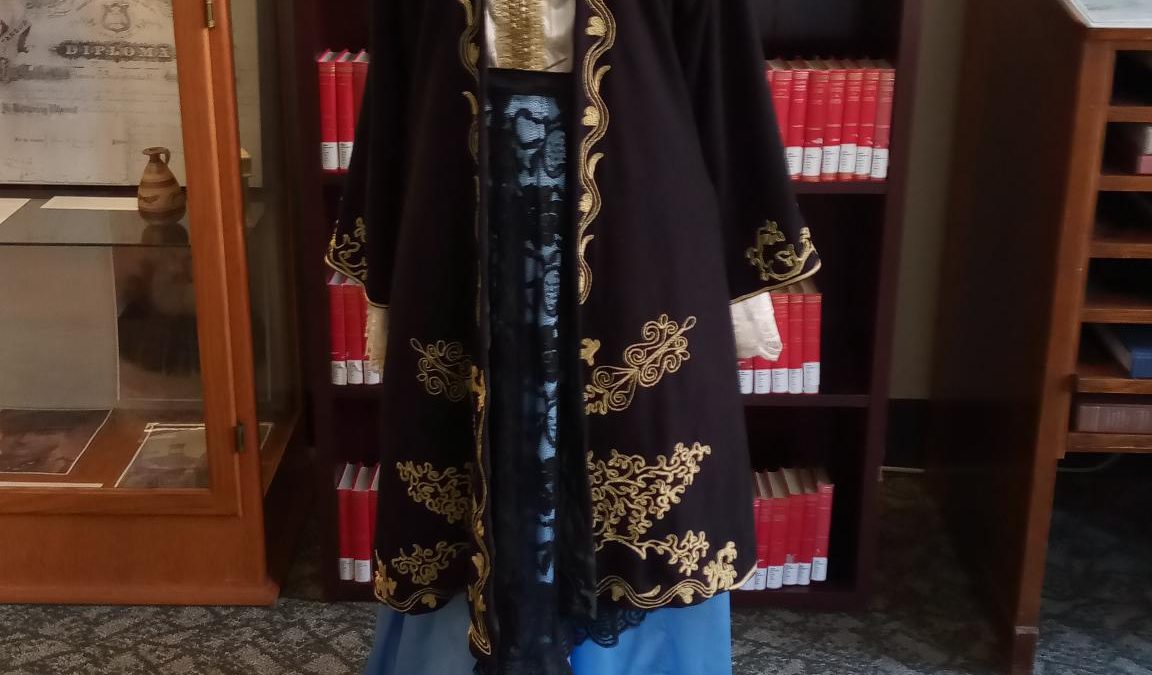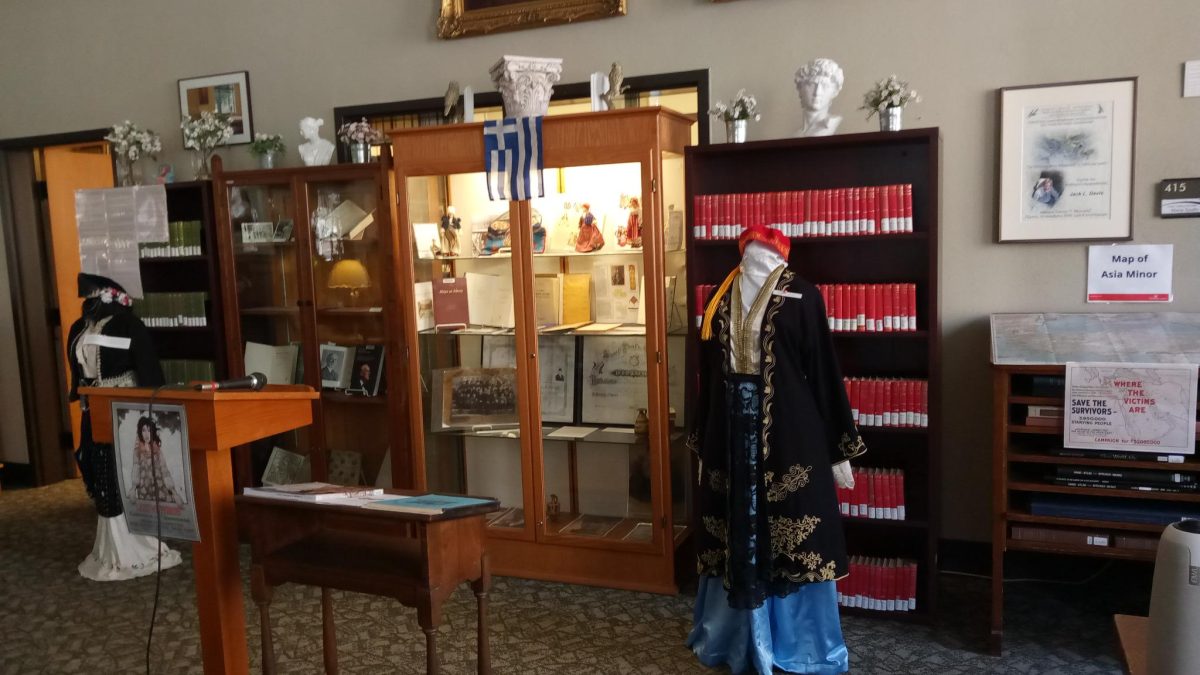On the day before Greek Independence Day, commemorating the start of the Greek Revolution on March 25, 1821, ca. 100 Greek American Cincinnati residents met for a day of remembrance of the so called Population Exchange following what in English is referred to as the Greco-Turkish War, lasting from 1919 to 1922 and ending with a treaty, the Treaty of Lausanne, signed by Greece and Turkey and also by Britain, France, Italy and others in 1923, establishing the current borders of Turkey and Greece, and stipulating the relocation of ca. 1.2 million Christian Orthodox Turks to Greece and ca. 400,000 Muslim Greeks to Turkey, upending the lives of so many who had never known any other country than the one in which they had been raised and the language they had spoken from birth.
They were forced to leave their homes, livelihoods, friends, pets, farmed animals, belongings, schools, etc. Many people had lost their lives in the war, been raped and sold, and the migrations killed even more through starvation and various illnesses and other hardships.
It was difficult to hear about the many individual tragedies yet also important never to forget. As several speakers in relating the stories of their grandparents and other family members reminded us, there are current refugee crises where many of the Asia Minor tragedies are repeated as we do not seem to learn from history. Some of the returning Greeks were welcomed; others were not. Some managed to get to the U.S. where they were also not always met with open arms. Signs at restaurants with the text ““Pure American. No Rats, No Greeks” (https://pappaspost.com/today-undesirable-muslims-yesterday-greeks/) remind us to reject the language of division of the past and present, that some immigrants are perhaps acceptable whereas others are not, and instead appreciate the many positive contributions refugees and immigrants often bring to their new countries. To quote one of the attendees at the event, Professor Emerita Vasso Apostolides, DAAP, in reference to Greece: “The Greeks of Asia Minor enriched Greek culture and knowledge and brought a new spirit, energy, and endurance to the country.”
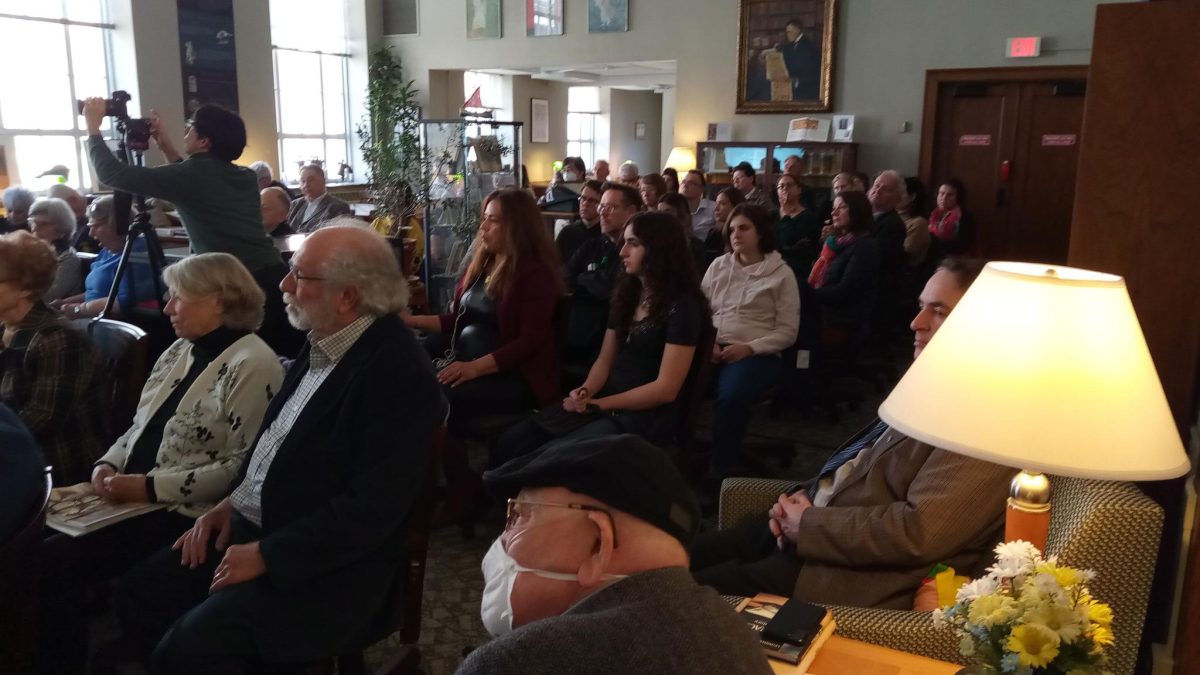
Every chair (ca. 100) in the Classics Library was occupied.
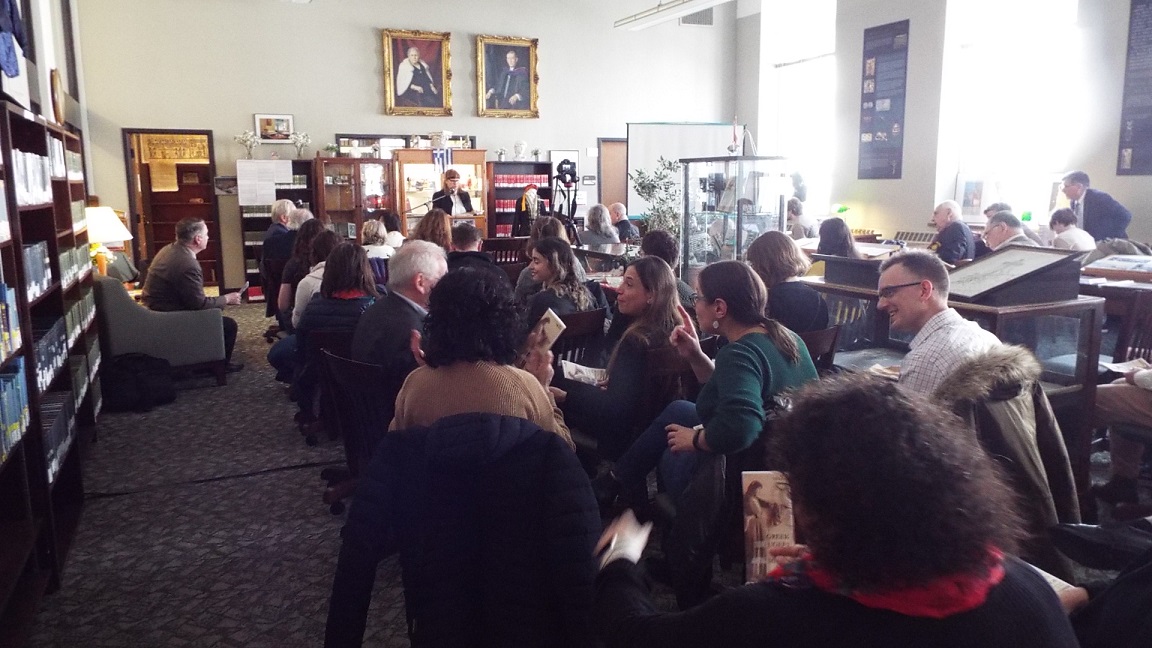
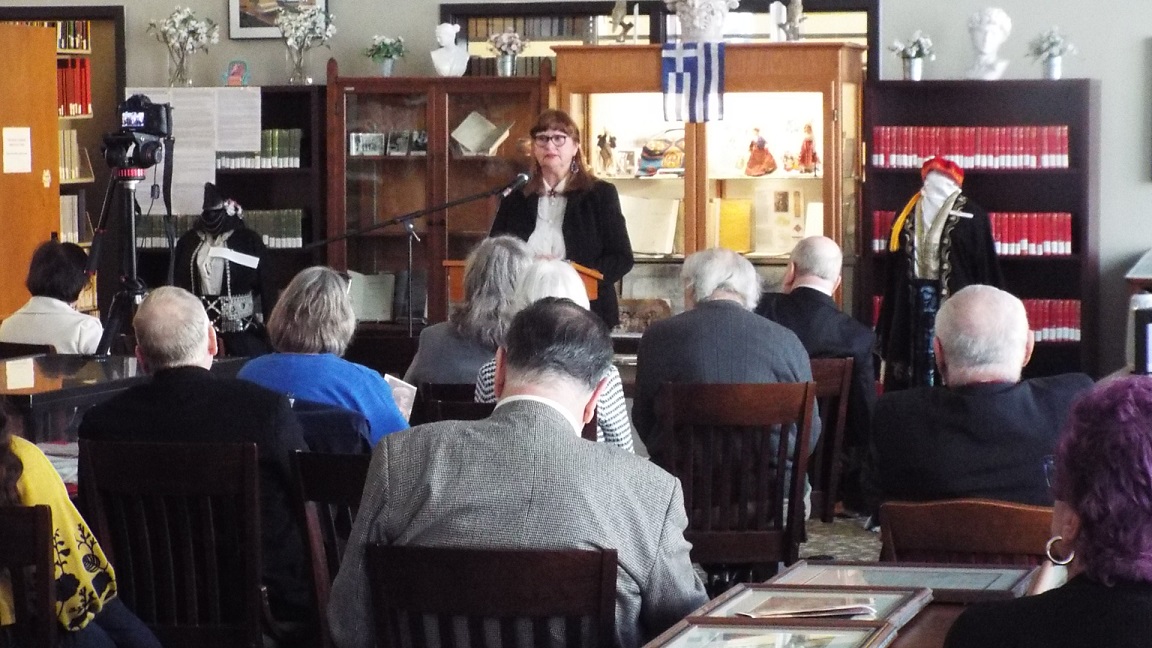
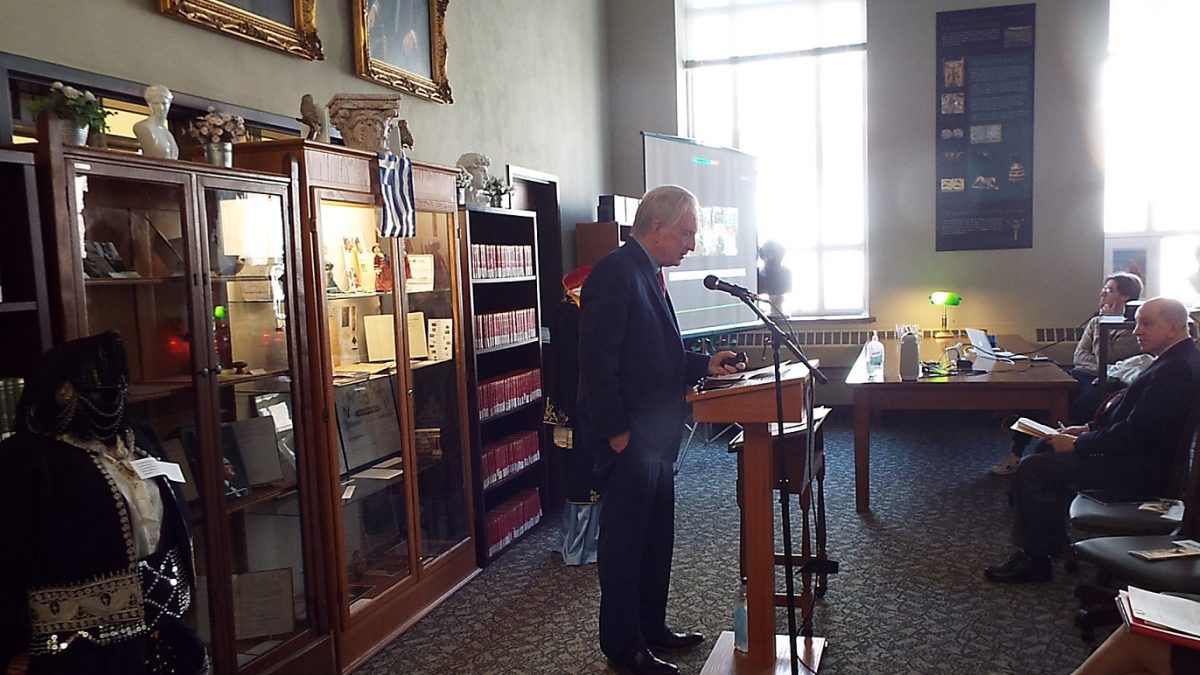
Presentations
The first speaker was world-renowned archaeologist and UC Professor Jack Davis who suggested the theme of the exhibition and gave a talk about “The Smyrna Catastrophe and the American Response.” The Smyrna Catastrophe refers to what really marked the end of the war, a fire which engulfed much of the port city. Thousands of Greeks and Armenians died in the fire. Bill Tsacalis, Trustee of the American Farm School in Thessaloniki, read a letter from the school’s archive: “The dazed refugees from Smyrna are crowding into the city by the thousands. Such a sorrowful lot, families divided with no knowledge as to where the others are. One of our former students was here the other day. He had escaped with his life after living for fifteen days in the fields and could not talk of what he had been through with a steady voice. He had cut his trousers off to the knee to make him appear like a younger boy, as the Turks were taking the men and boys they did not kill to put into their army.”
The American response was multifold. The Near East Relief organization, in addition to running five orphanages in Athens, Corfu, Corinth, Oropos, and Syros, launched a 30 million dollar campaign to raise funds for the refugees. Art Deco posters made for the effort are included in the exhibition. Funds were raised at private gatherings. In Cincinnati, Louise Taft Semple hosted several such fund-raising events. Other individuals such as Edward Capps, Professor of Greek at Princeton and Minister to Greece, appointed by his friend President Woodrow Wilson, led the Red Cross in delivering food, shelter, and clothing, and his daughter Priscilla was the Director of Near East Industries in Athens. She organized workshops of orphans and other refugees producing elegant and colorful dolls in traditional costumes and purses and other items (included in the exhibition), and UC Professor and archaeologist Carl Blegen, and Bert Hodges Hill, Director of the American School of Classical Studies at Athens, fund-raised and in other ways aided refugees.
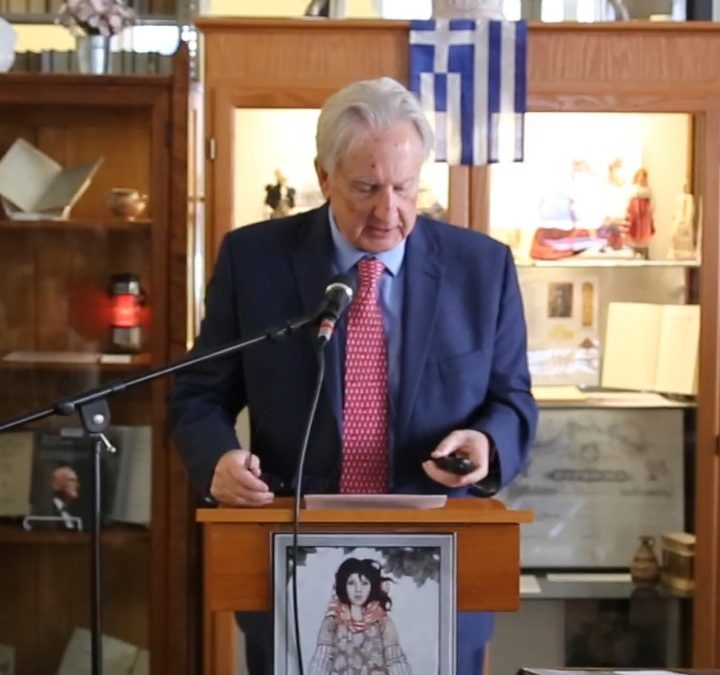
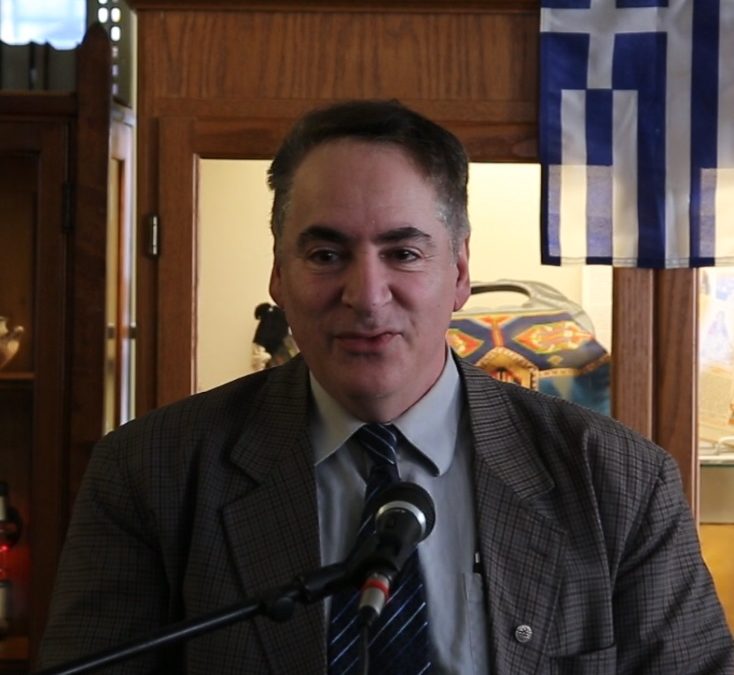
Professor Alexander Christophoridis, DAAP, spoke about his grandparents on both his mother’s and father’s sides, contributing many photographs and even school diplomas to the exhibition, recruited the participants sharing oral histories, and brought mannequins with folk costumes from Amalia, Attica, and Alexandreia (now Gidas), Macedonia, belonging to the Greek Orthodox Church in Cincinnati where Professor Christophoridis is the director of its Greek School. The latter costume sports the characteristic helmet-like cap, a tradition since the days of Alexander the Great, who according to legend had gifted helmets to the women whose courage saved a village near the town. The bridal costumes of the women of the town of Sille in Cappadocia, the town of Professor Christophoridis’ grandfather, were particularly elegant. His great grandfather, a Bishop of Sille, was captured by Turkish forces and disappeared.
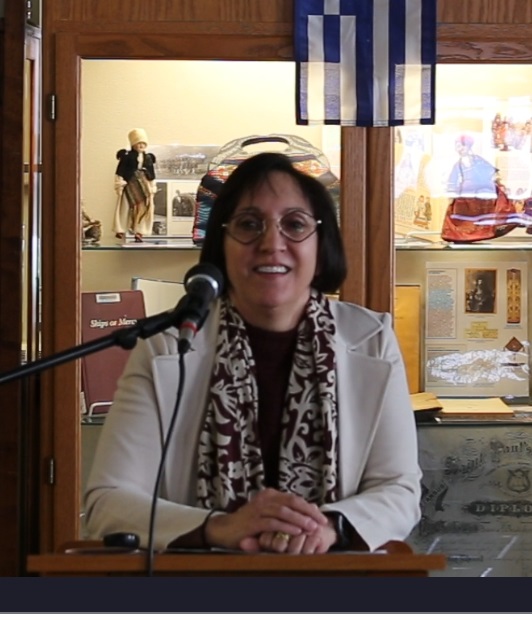
Lauren Peters relayed the story of her grandmother who came from the island of Koutalis (now Ekinlik Island). As refugee she hid a 1000-year-old coin in her clothes, now worn around Ms. Peters’ neck. The grandmother was an extraordinary seamstress who had worked for a pasha and his harem in Constantinople. Ms. Peters contributed many garments, embroideries, photographs, documents, and letters to the exhibition.

George Nyktas told the story of his mother’s family who emigrated from the island of Tenedos (now Bozcaada) in the early 1900s. His grandfather was a refugee from Aivali (now Ayvalik) in Cappadocia. His father was Vasilios Nyktas. His mother was Eleni (Helen) Maras. After arriving in Cincinnati they continued to keep in touch with relatives still in Aivali and on Tenedos.
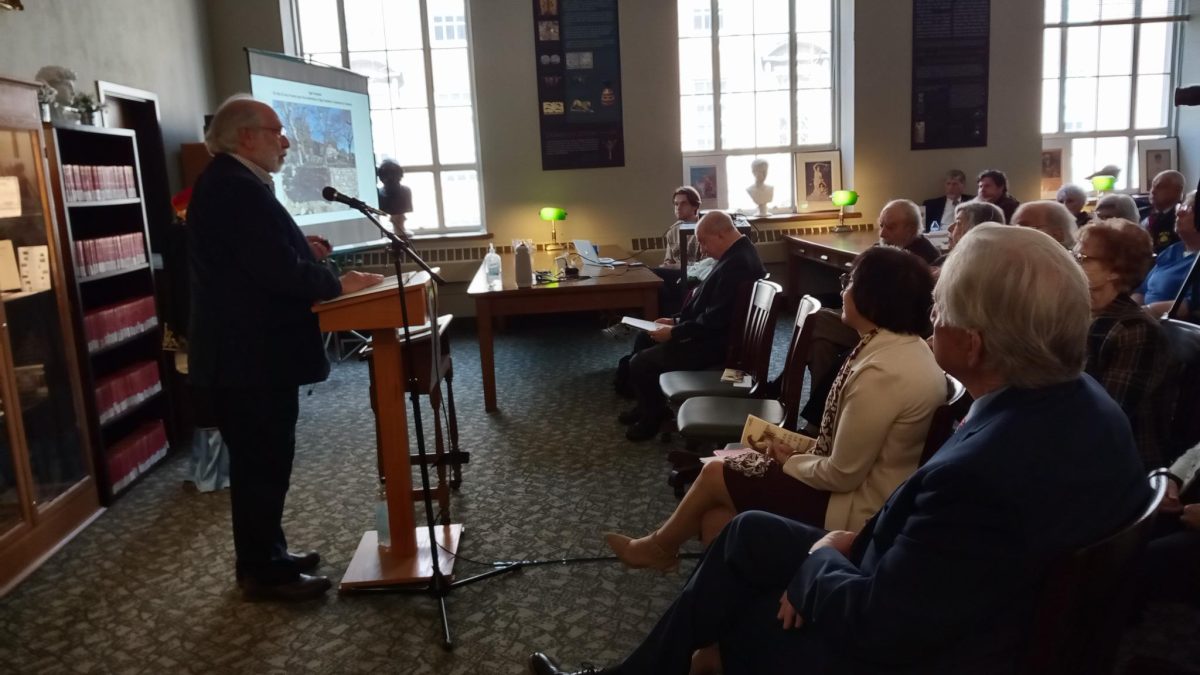
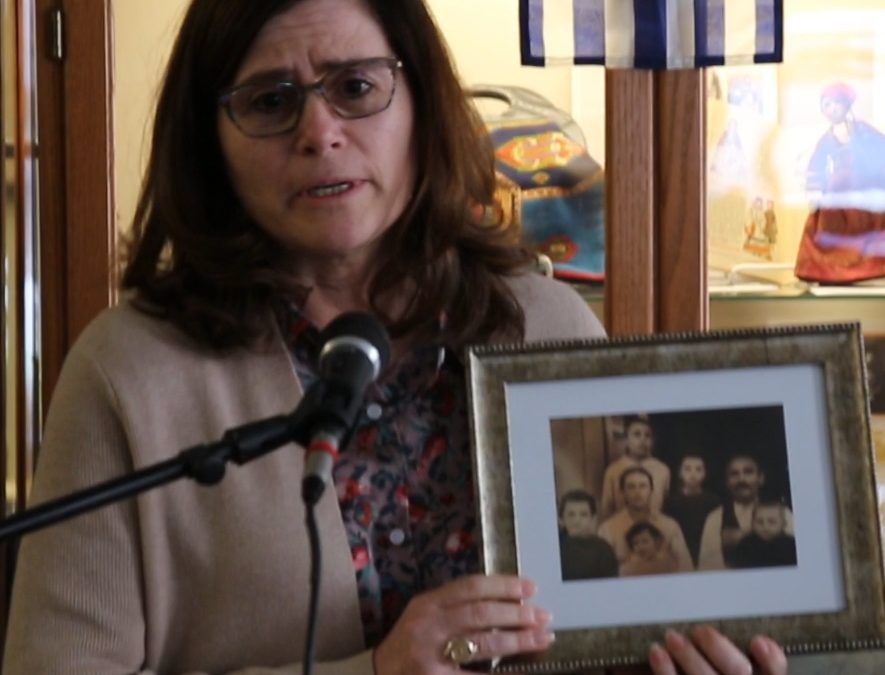
Eleni Caddell (Inempolidou) was born and raised in Athens, Greece. Here she is holding a photograph of her family from Saphrampolis (now Safranbolu), a town in the Black Sea area. Ms. Caddell spoke eloquently about refugees then and now.
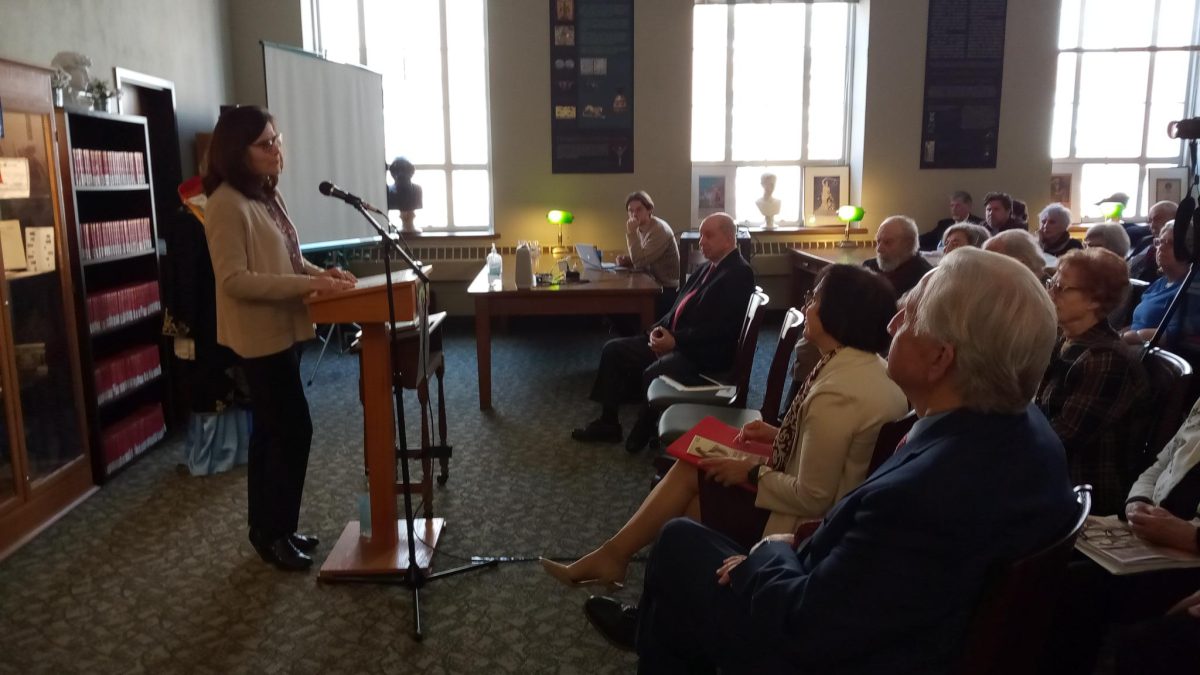

William or Bill Tsacalis is a Trustee of the American Farm School in Thessaloniki where he has served on the Board for more than 20 years. He is currently Chairman of the Finance Committee and a member of the governing body of the School’s affiliated Perrotis College of Agriculture, Environment and Life Sciences offering both a Bachelor and Masters degree of Science. He also serves on the Board of Trustees of Bethesda Inc. He is a retired Vice President of Chiquita Brands International, a retired CPA, and was formerly a Senior Manager with Price Waterhouse. Mr. Tsacalis’ family roots are in Northern Greece and Asia Minor. He spoke about the Farm School in Thessaloniki, which was founded by American missionaries John Henry House and his wife Susan Adeline in 1904, almost 20 years before the Population Exchange but the Farm School was an important institution also during and after the War in aiding refugees (see above in the caption to the talk by Jack Davis discussing the Smyrna Catastrophe). For example, they introduced a fish, gambusia, from Italy which ate mosquito larvae in a successful attempt to combat malaria, a disease common among the refugees. The Farm School shipped the fish also to other aid centers in Greece. From having been founded as a boys’ school with orphaned students, it welcomed girls in 1946. Mr. Tsacalis also spoke of the tragic kidnapping of the senior class in 1949. Today, the School still teaches agriculture, but now emphasizing sustainability. It offers classes from kindergarten to adult education. It also runs a summer program for American students eager to immerse themselves in Geek culture and language.
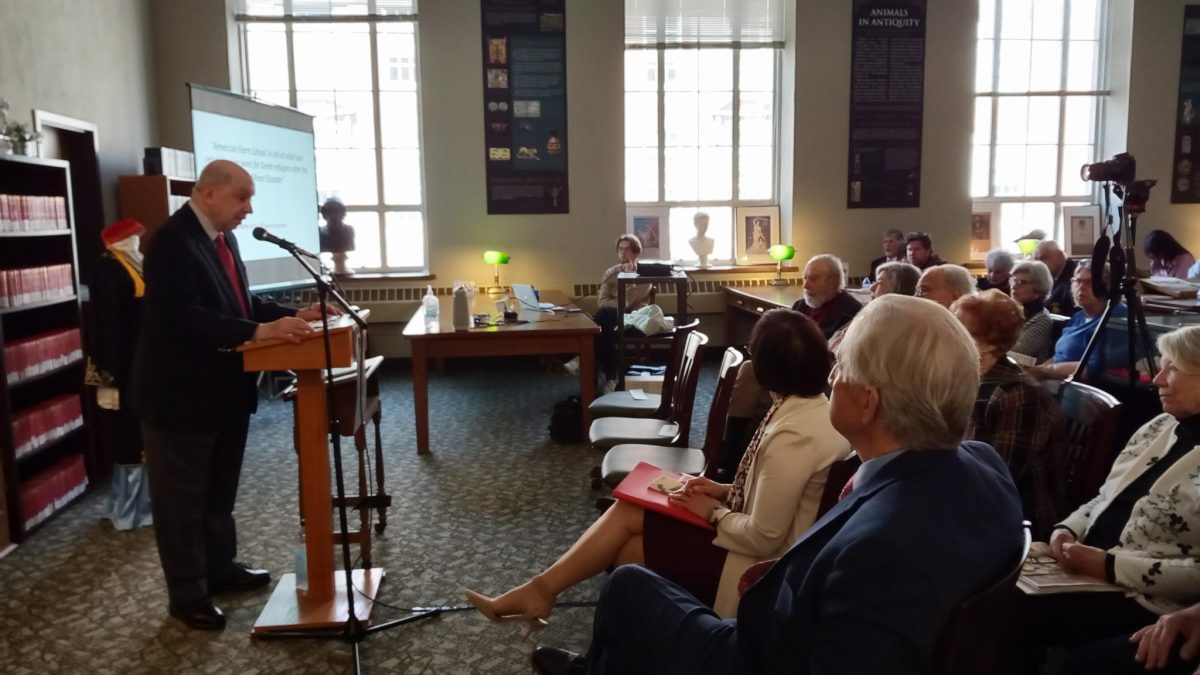

An addition, not in the program, was Gus Perdikakis, Archon of the Ecumenical Patriarch of the Greek Orthodox Church and former President of the Greek Orthodox Church in Cincinnati, and his brother Pete. Mr. Perdikakis read a letter written by his father George, the basis of the George and Eftehea Youth Scholarship awarded annually at the Holy Trinity-St. Nicolas Greek Orthodox Church in Cincinnati. His father came from Moschonisia (now Ayvalik) where he helped the underground resistance movement with leafletting and newspaper deliveries. These activities landed him in jail where he was beaten. The family escaped to Lesbos (Mitilini) and the father eventually left for America where he met the lovely Eftehea Mavridoglou, she, too, from Moschonisia.

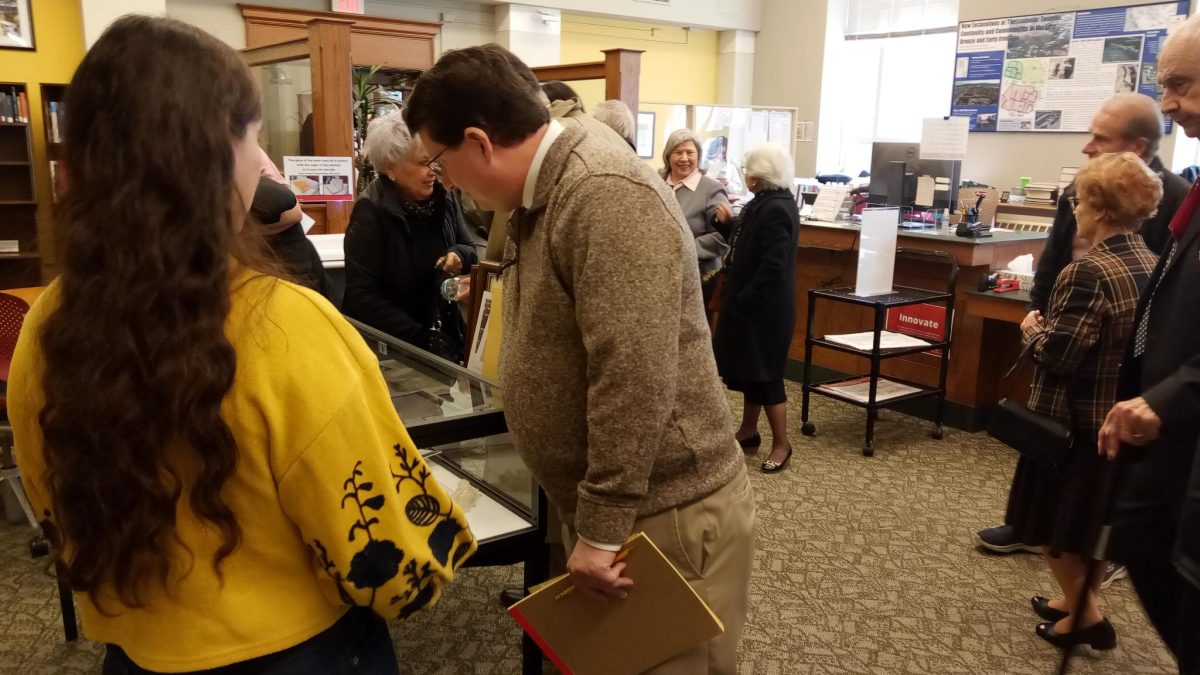
Attendees arriving and some examining the exhibition.

Three of the speakers, Lauren Peters, George Nyktas, and Jack Davis chatting after the presentations. Next to George Nyktas is his wife Mary.
Reception

A reception followed the presentations with Nescafé imported from Greece and baklava.
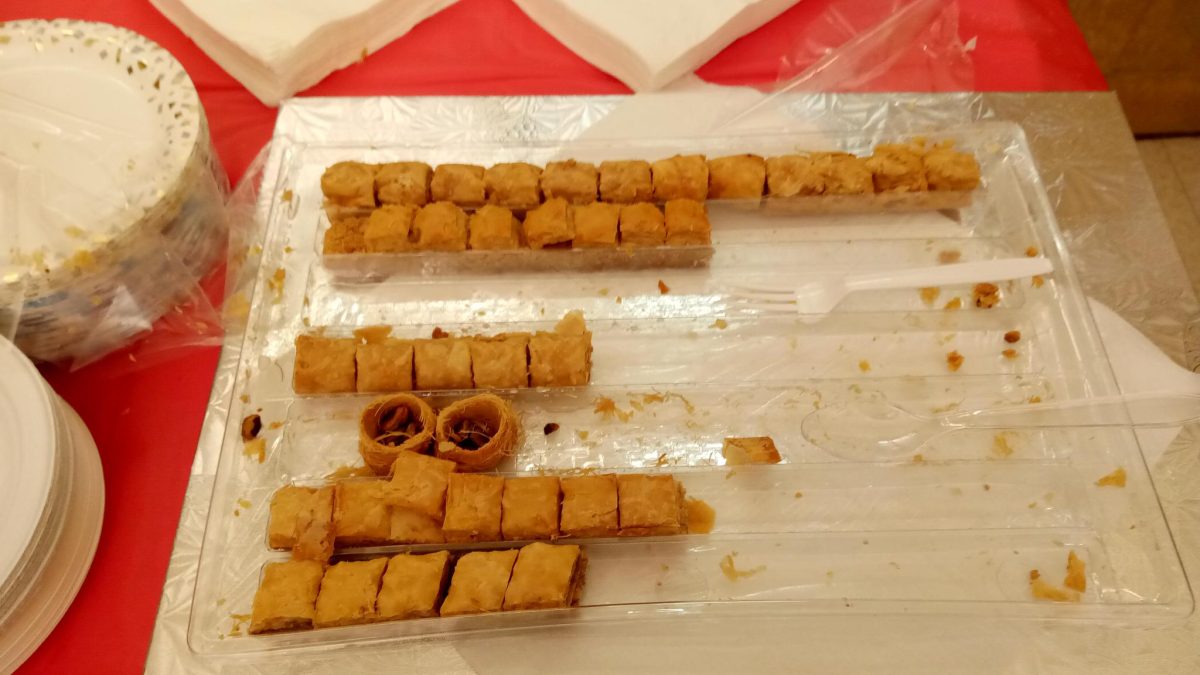
The baklava was popular.
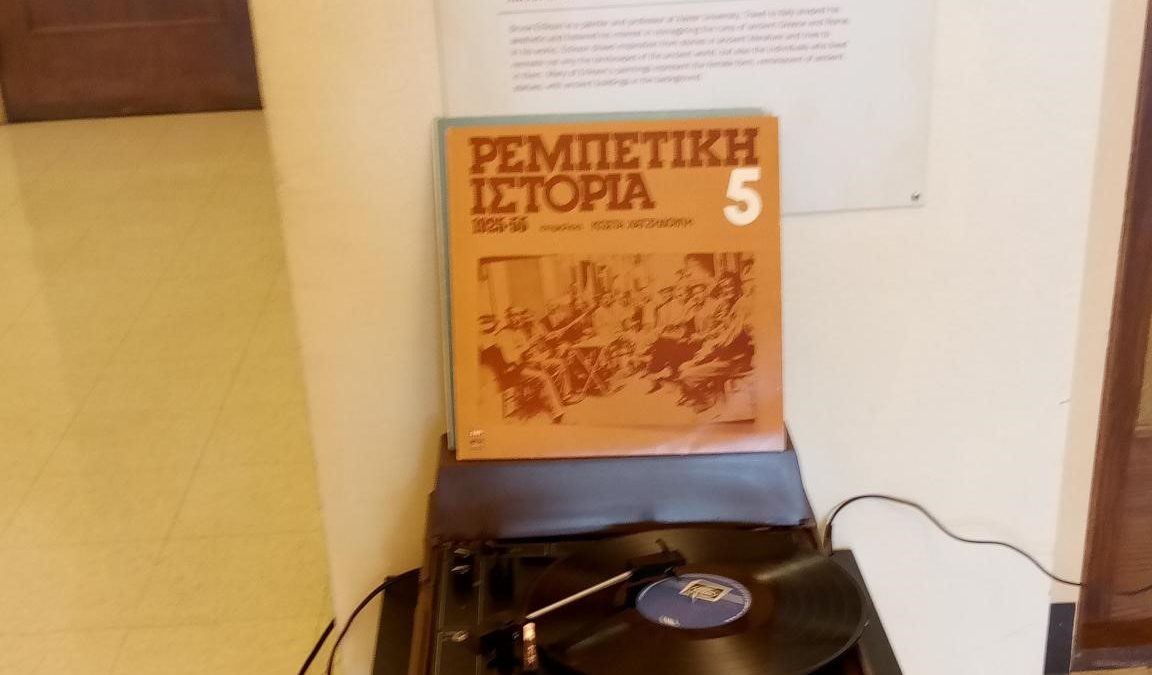
Greek traditional music, rebetiko (pl. rebetika) was playing on an LP record player. From the Burnam Library’s Greek LP collection.
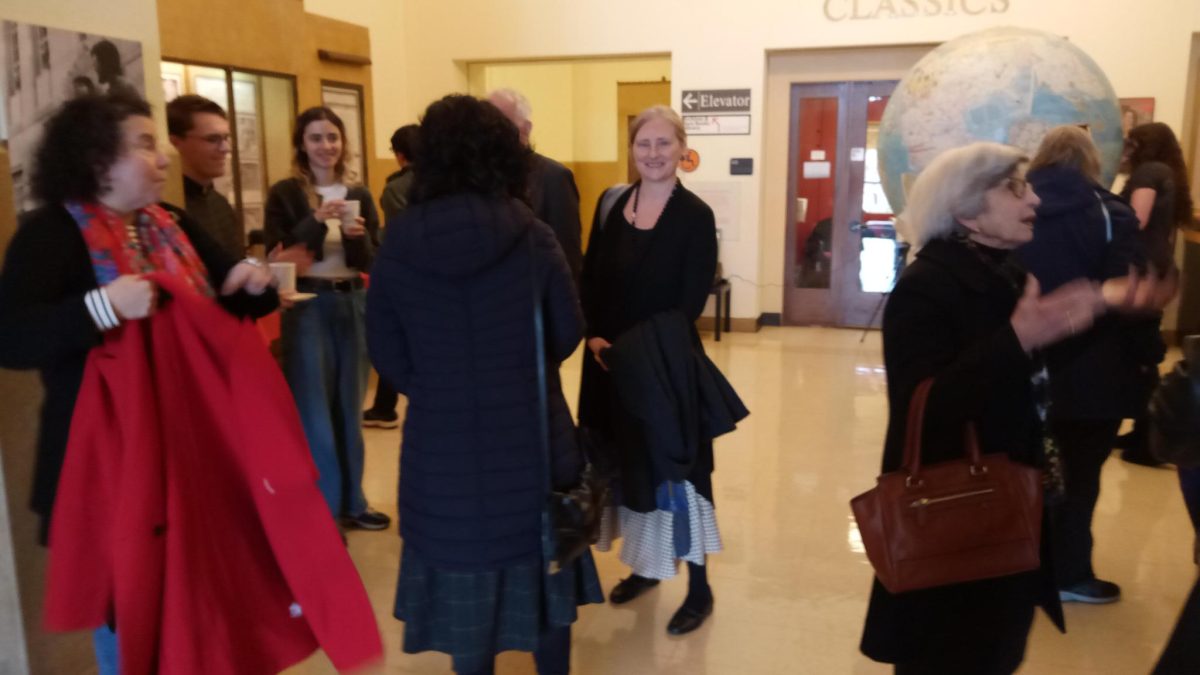
In the center facing the camera is one of this year’s Tytus fellows, Valeria Meirano, and to the left, also facing the camera, Greek graduate student of Classics Marialena Chalari.
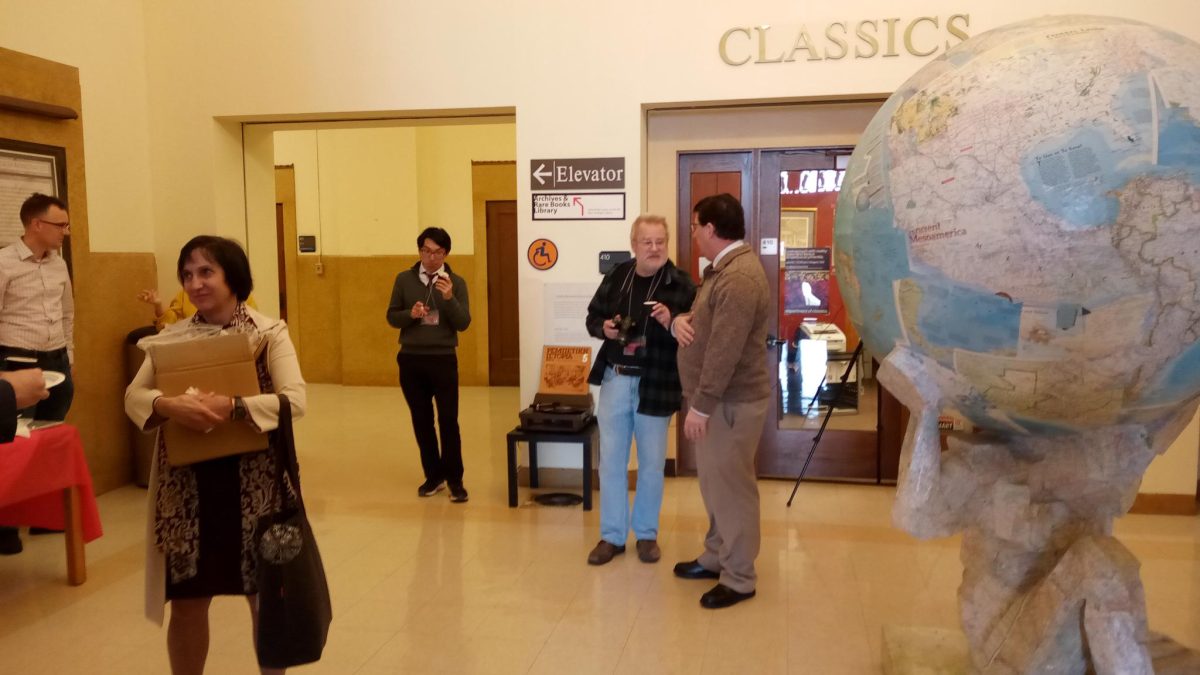
Assistant Professor of UC Classics, Matthijs Wibier, and Lauren Peters, Yo Shionoya, Special Projects Student Assistant, a CCM doctoral student and oboist, who designed the program and flyer for the event. Mike Braunlin, bibliographer, the UC Classics Library, and Jeffrey Kramer, archivist and junior research associate, the UC Classics Department.
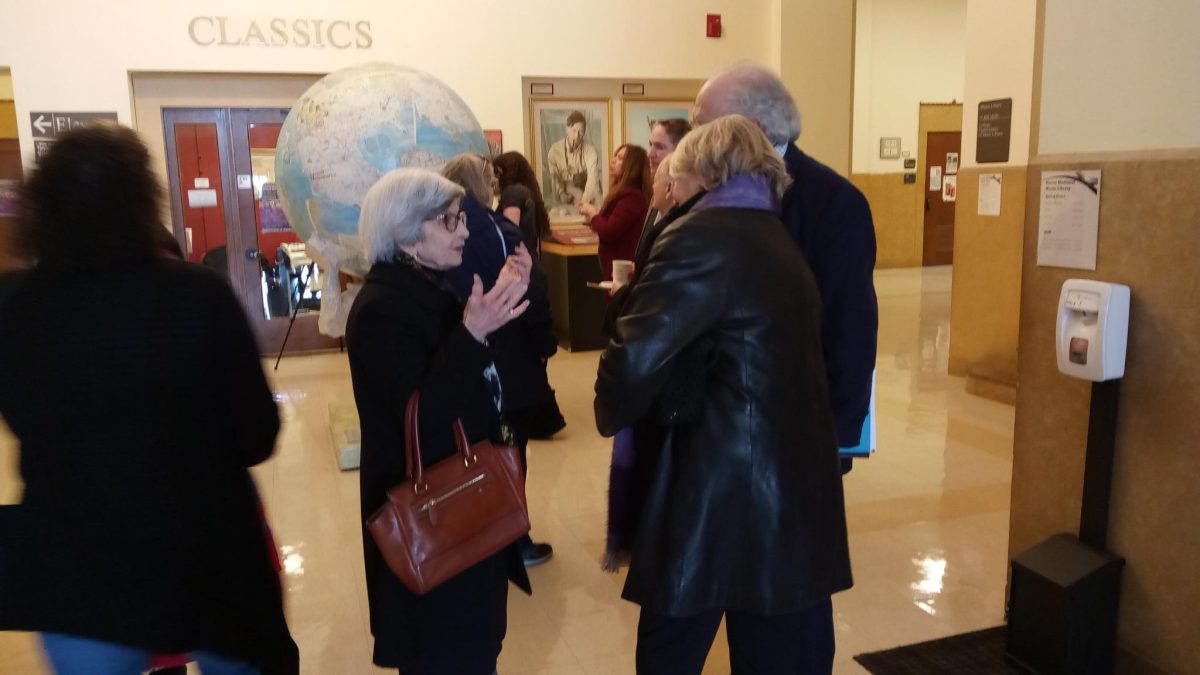

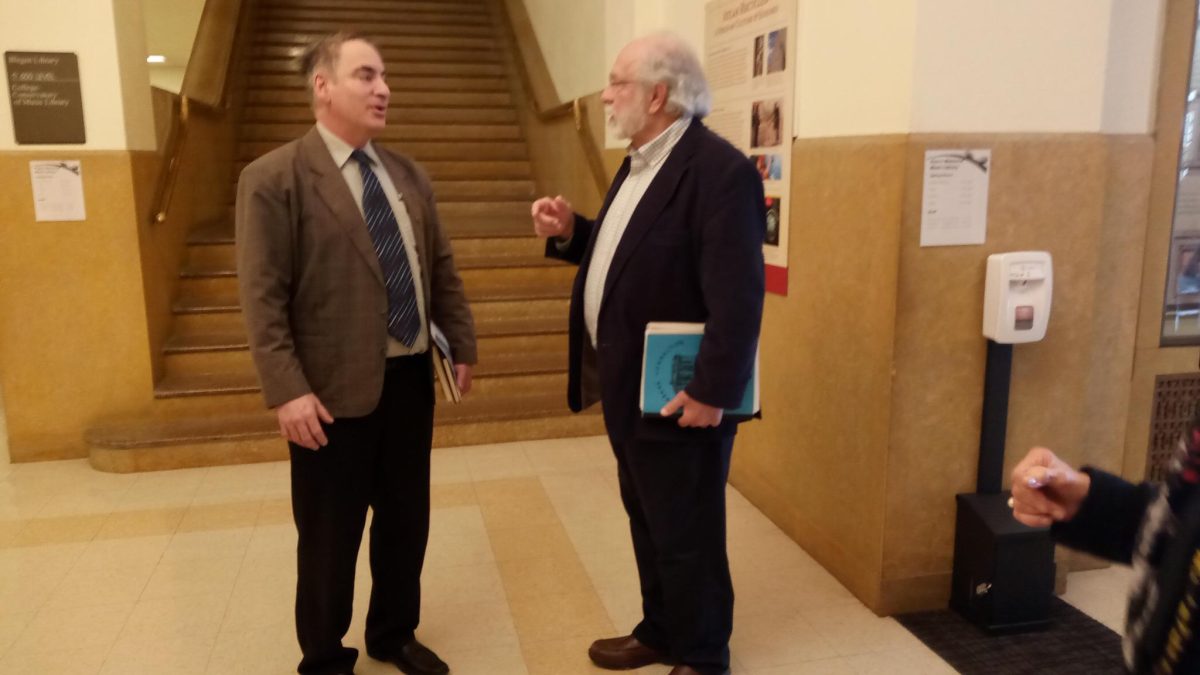
Two of the speakers, Professor Alexander Christophoridis, DAAP, and George Nyktas.
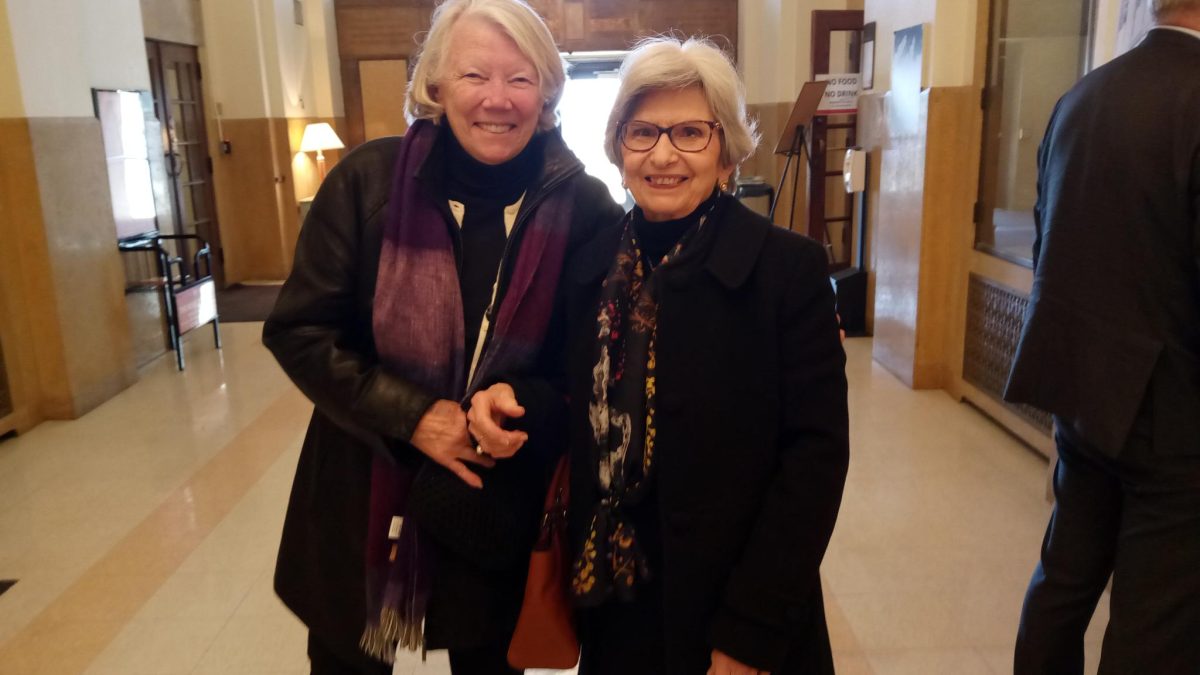
Professor Emerita Vasso Apostolides (to the right in this photo), DAAP, who contributed a narrative about her family to the exhibition. Her grandparents who lived near Smyrna in fear and anticipation of what was to come sent their two sons to Ismailia in Egypt. The younger brother of Professor Apostolides’ father did not want to leave and maybe made up a story that he wanted to buy candy for the journey from some itinerant merchants at the harbor. The older brother (Professor Apostolides’ father) let him go ashore seeing no harm in just buying candy. That was the last anyone saw of the boy. In September 1922, the remaining family fled the Fire of Smyrna by boat with other refugees to arrive in Piraeus. The father stayed in Ismailia where he married and eventually came to Greece. Professor Apostolides herself eventually moved to the U.S. for graduate study, with her husband and young son.
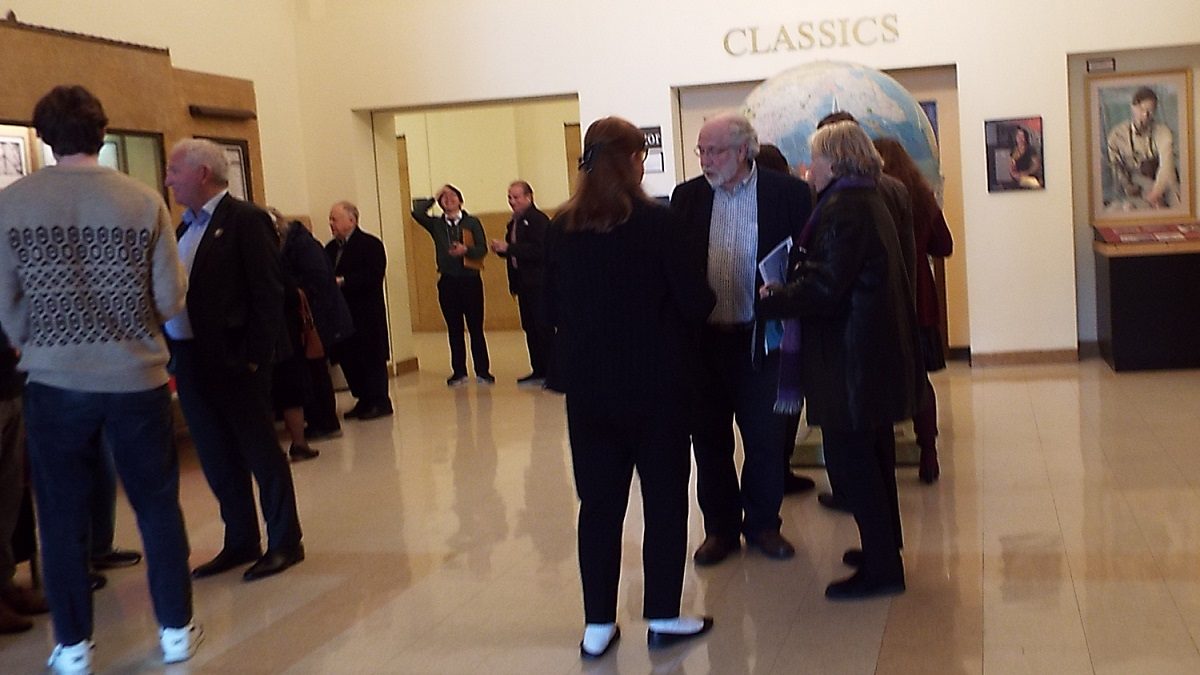
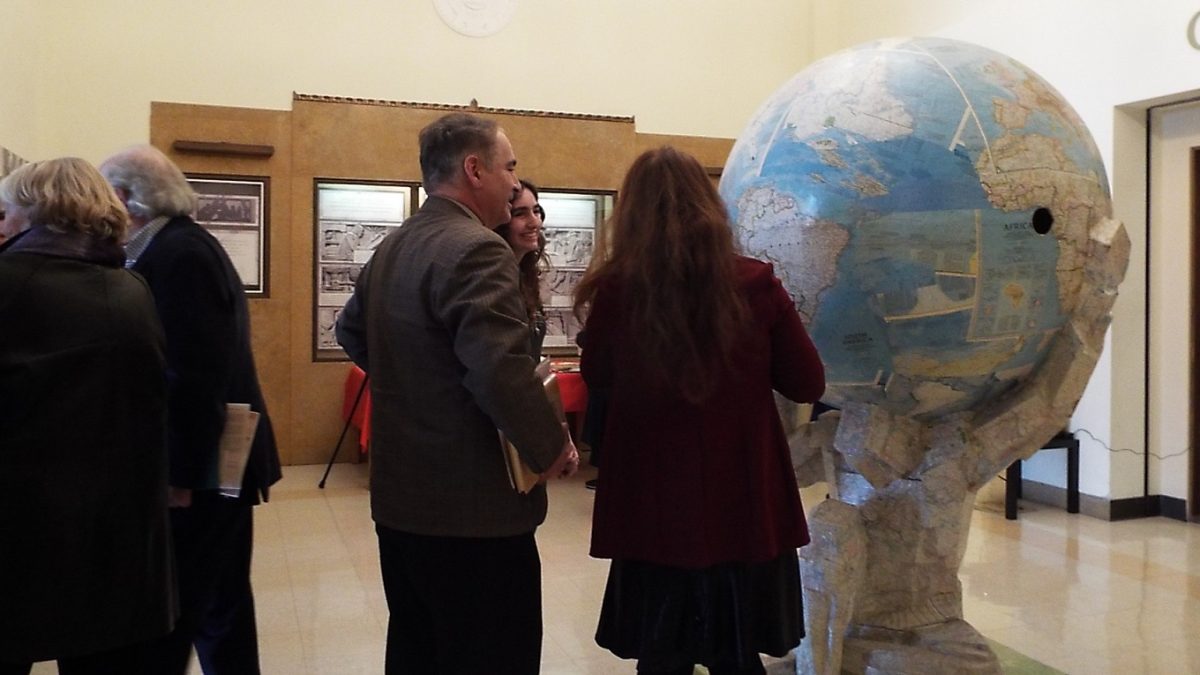
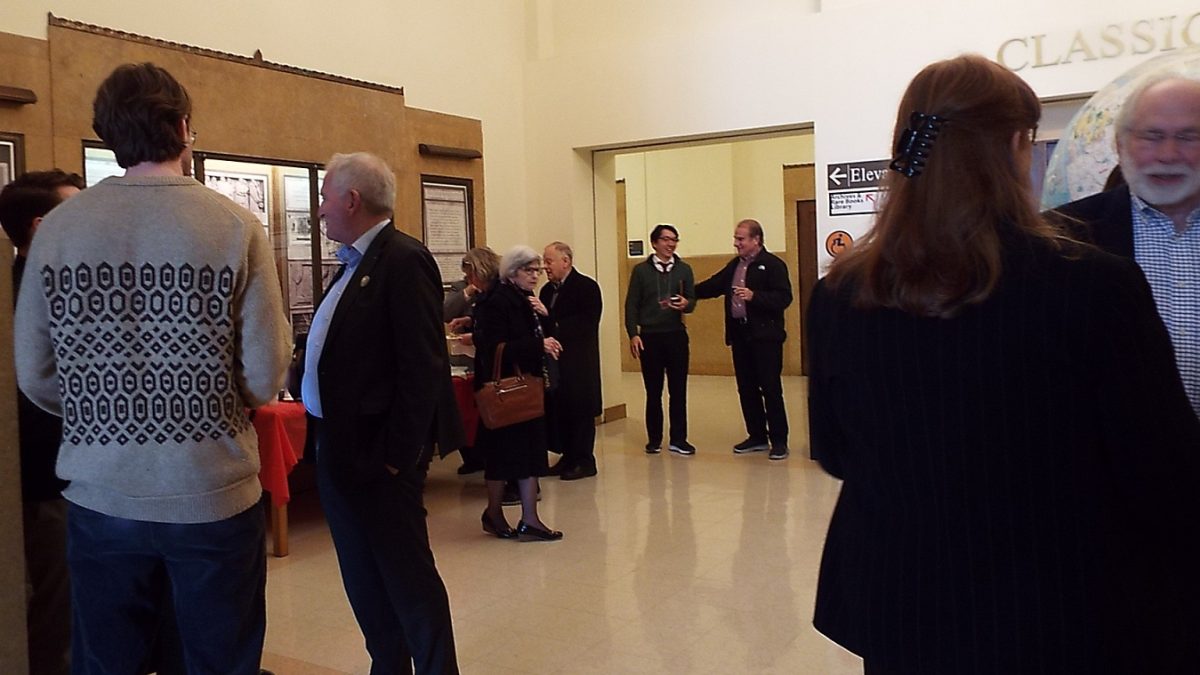
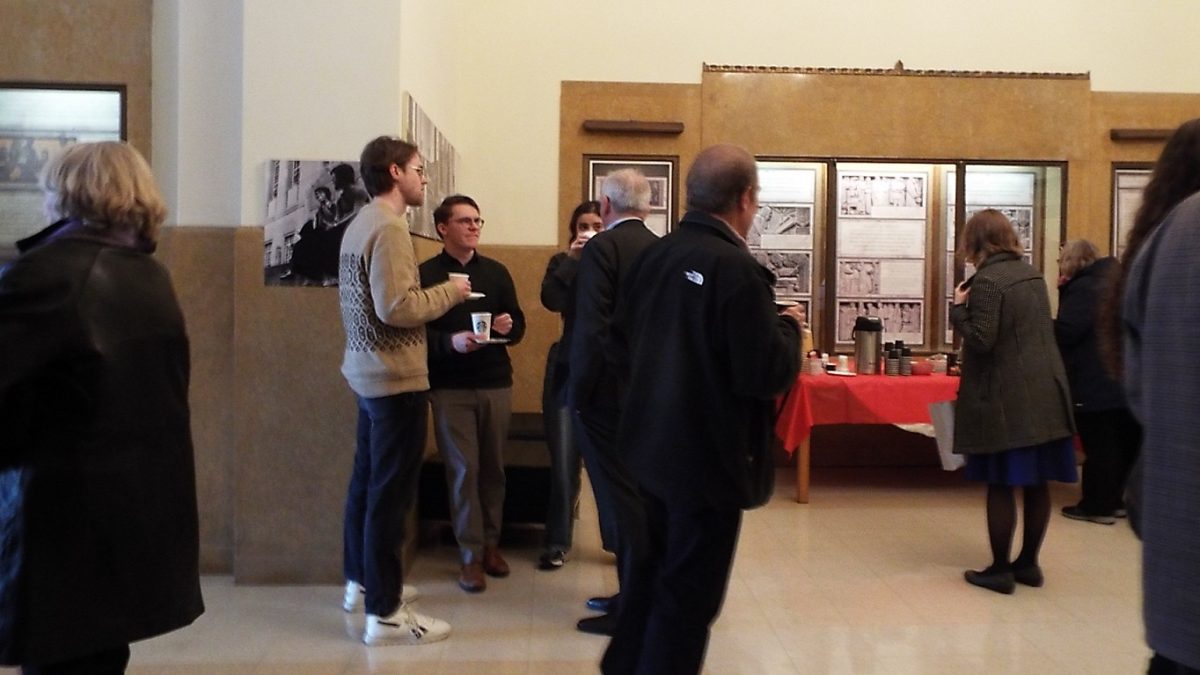
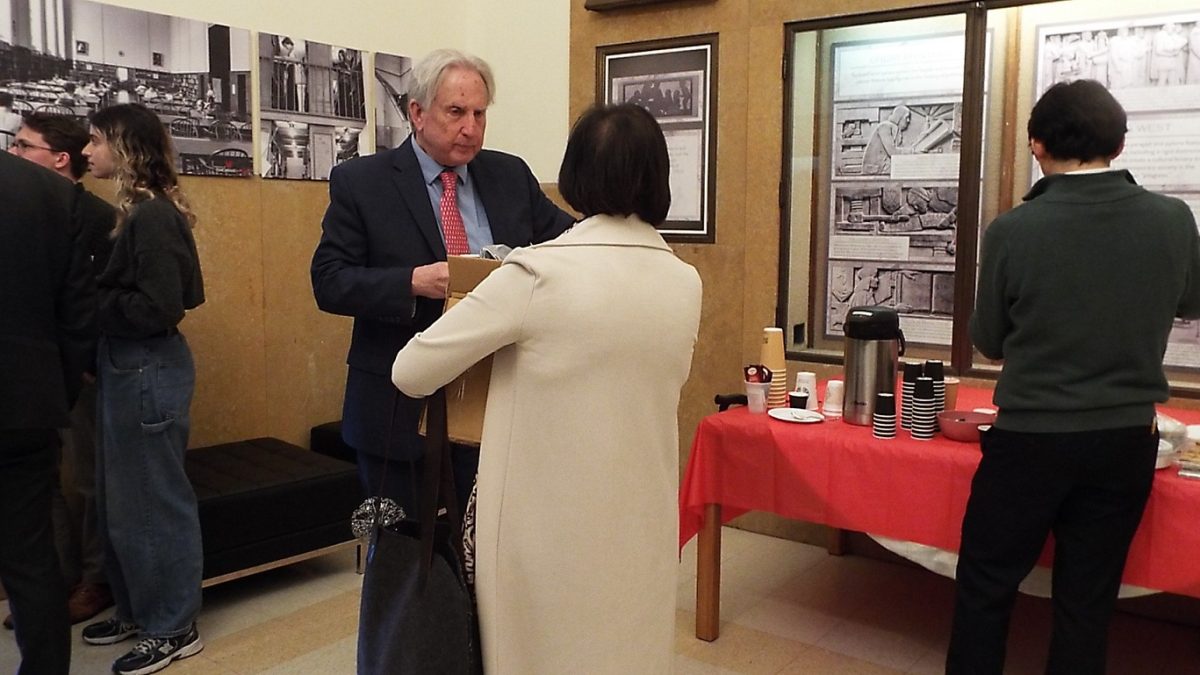
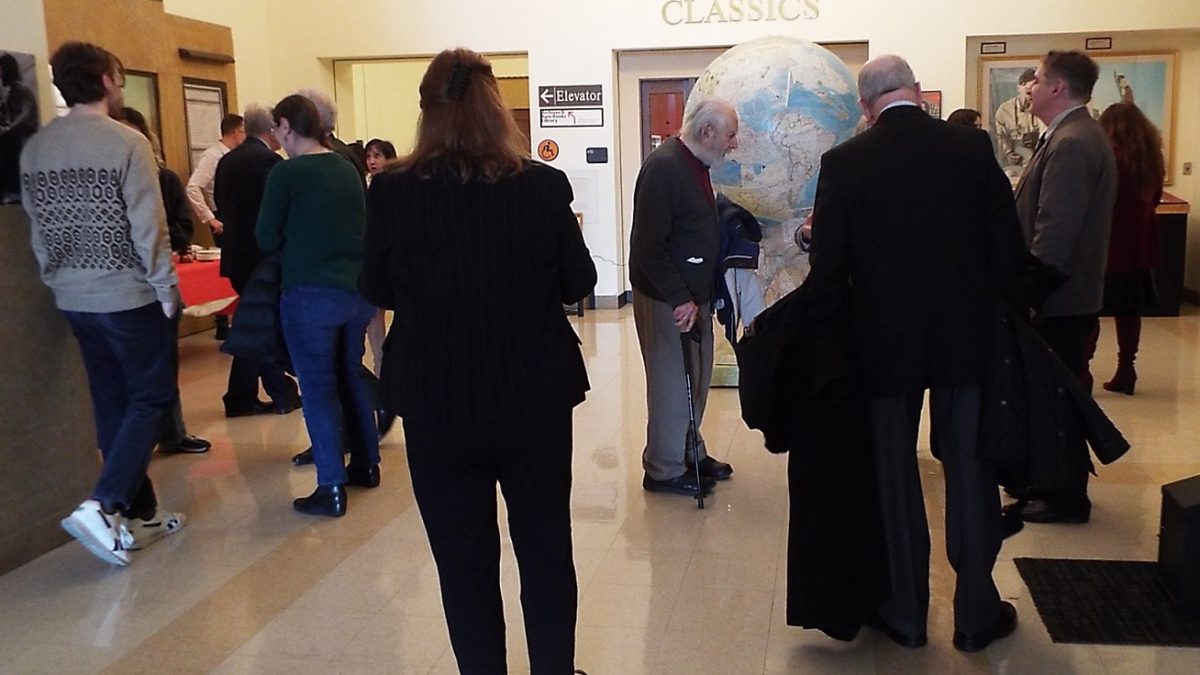
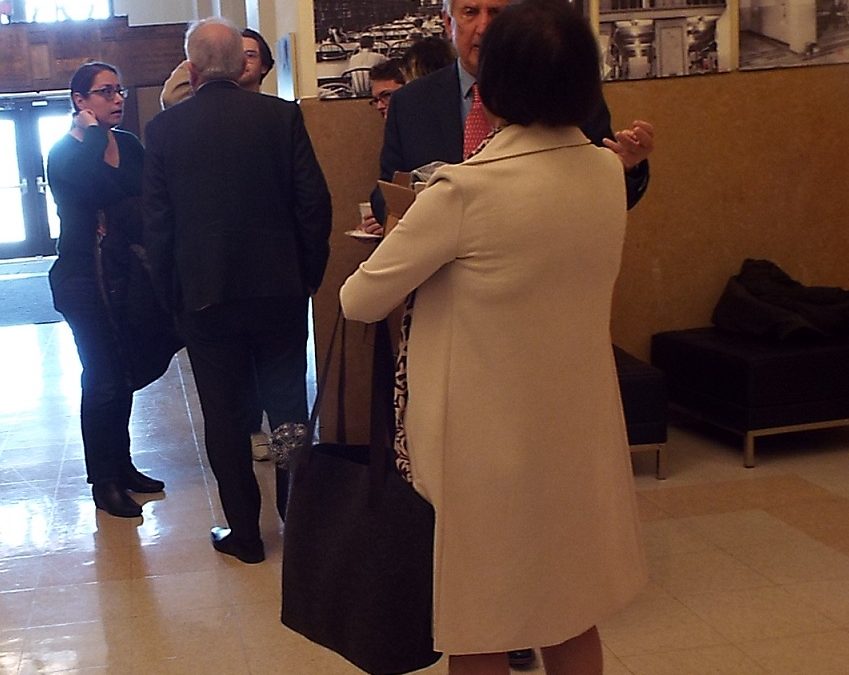
Exhibition
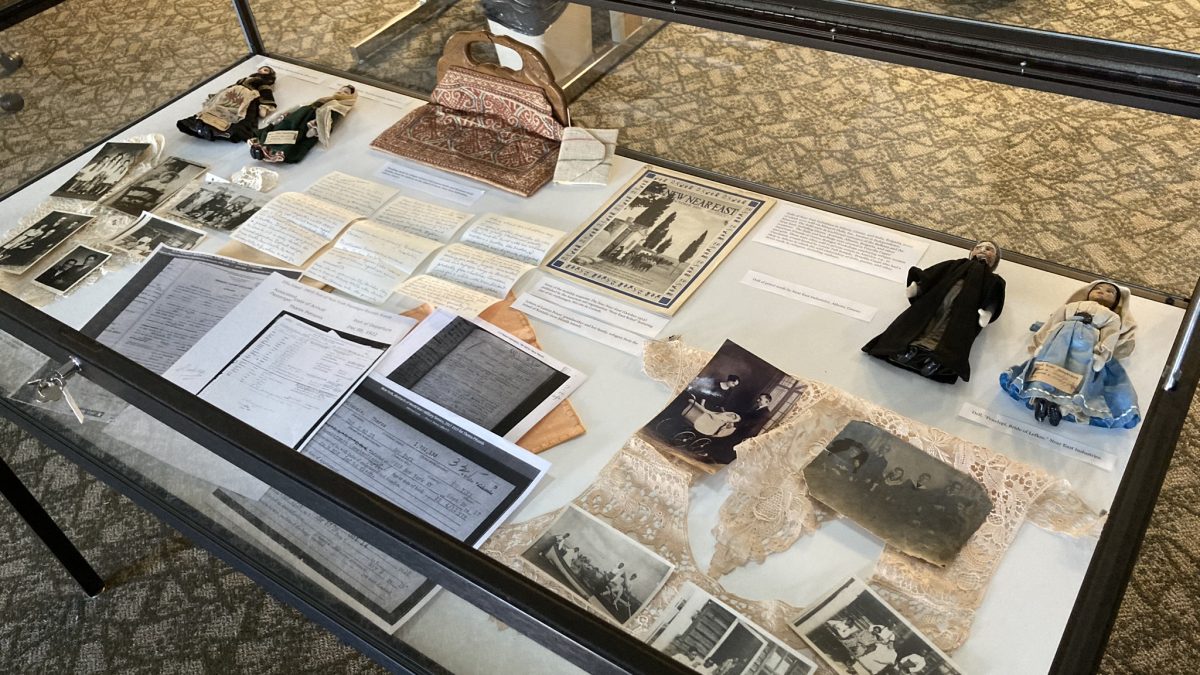
In this exhibit are dolls and purses made by orphans and other refugees, an October 1923 issue of The New Near East newsletter featuring one of the orphanages, the one in Corinth, on loan from Professor Davis. Photographs, table cloths, letters, and documents on loan from Lauren Peters.
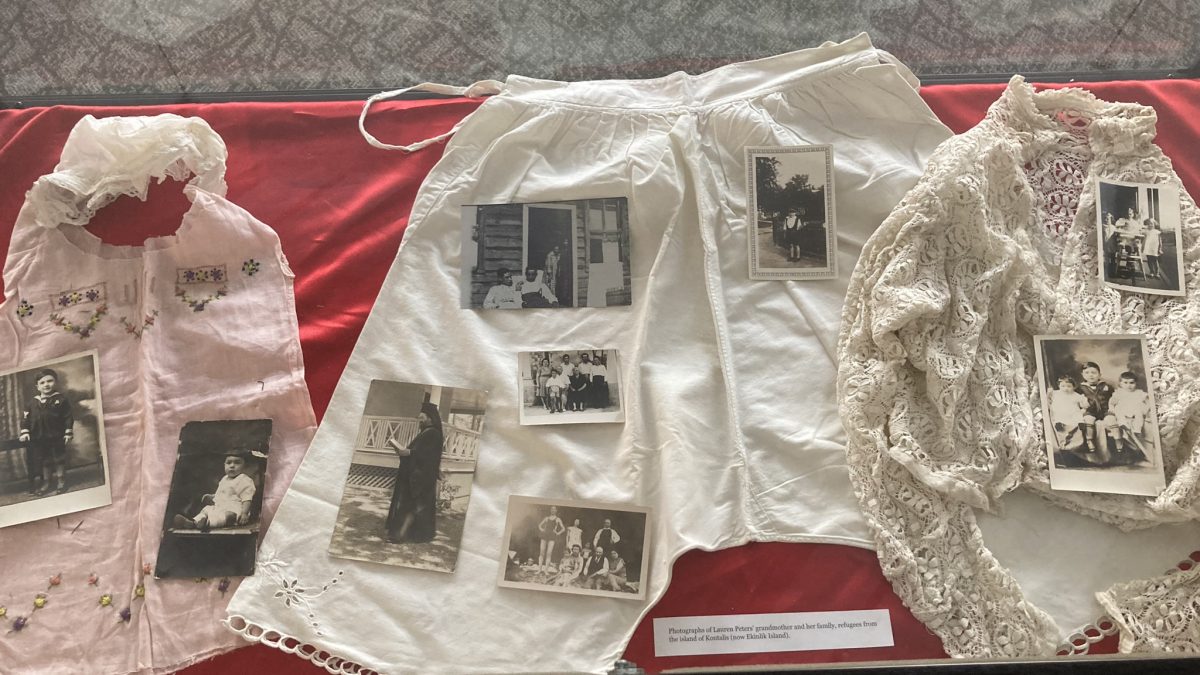
Clothes sewn by Lauren Peters’ grandmother in Constantinople (now Istanbul) working for a pasha and his harem.
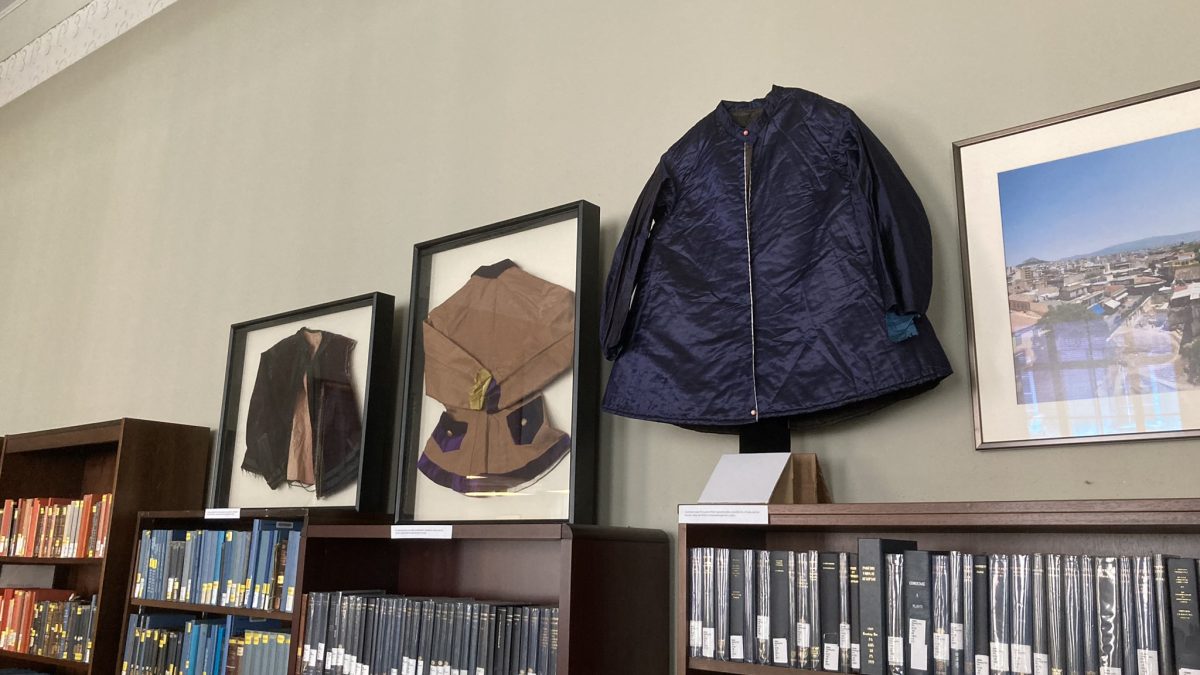
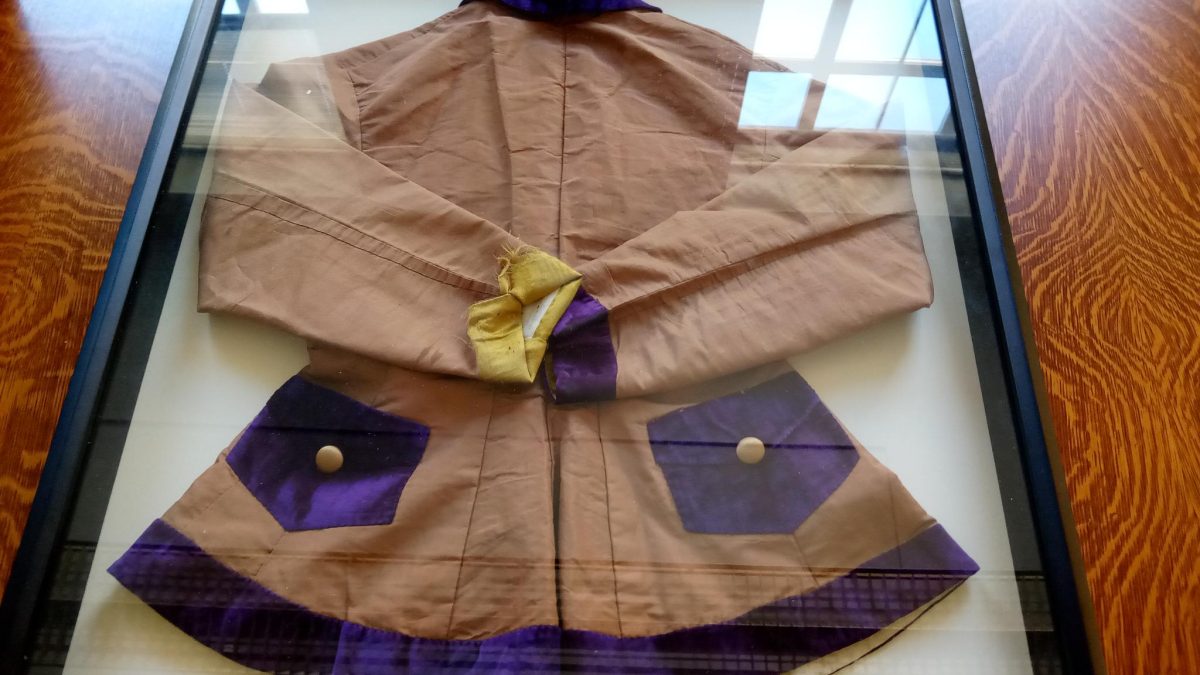
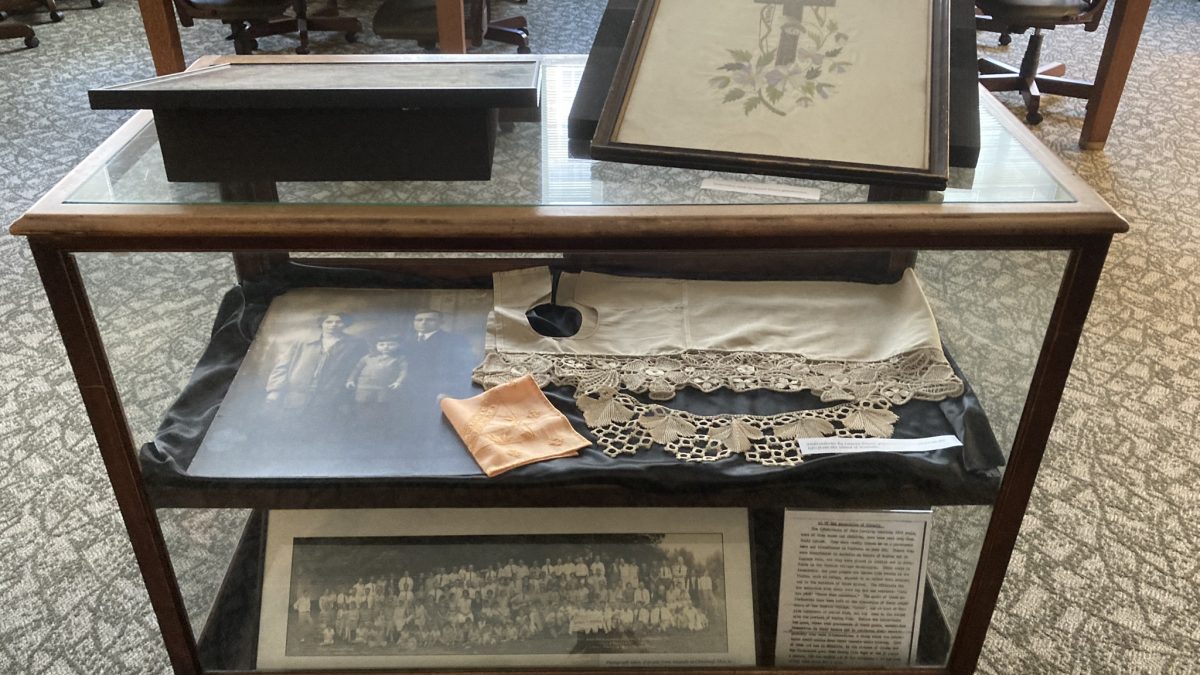
Embroideries and photographs of Lauren Peters’ grandmother and extended family.
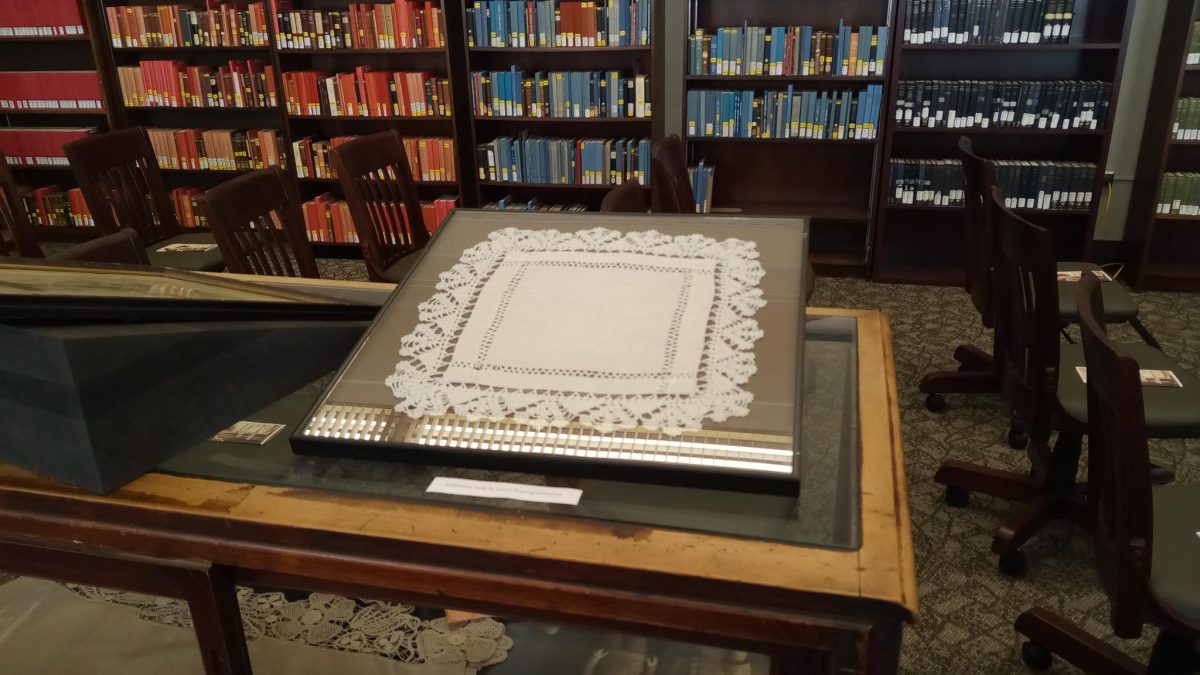
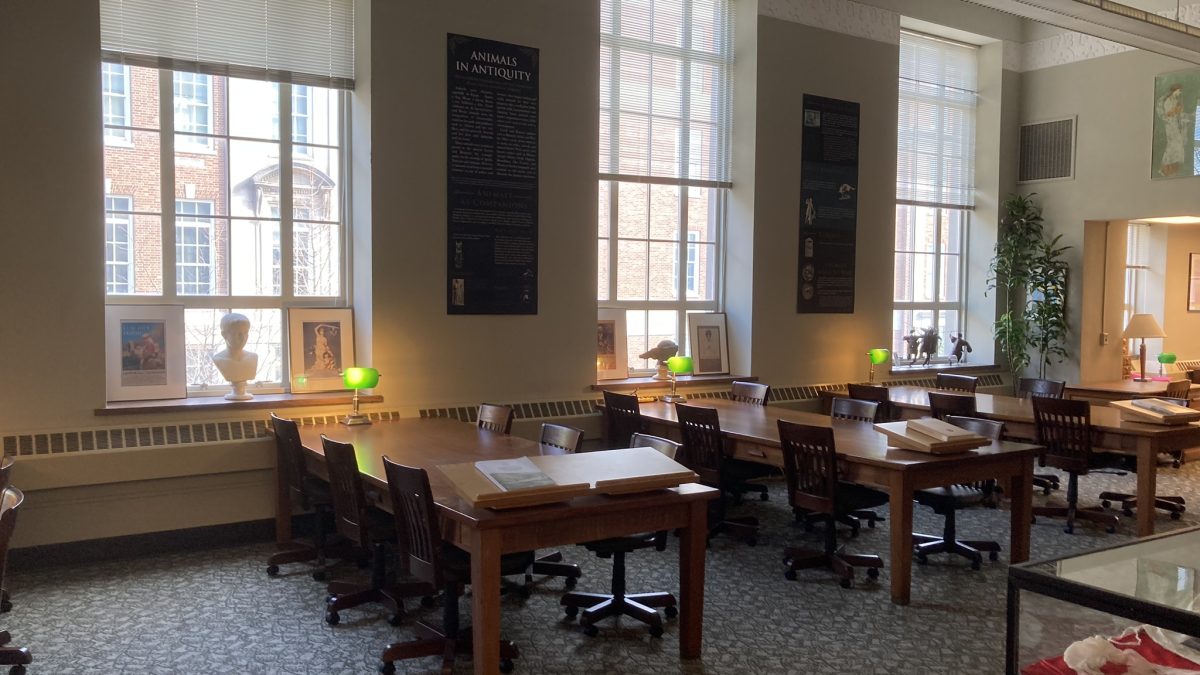
Posters of the 30 million dollar aid campaign by the Near East Relief organization lining the windows of the Library’s reading room. From the private collection of UC Professor Jack Davis.
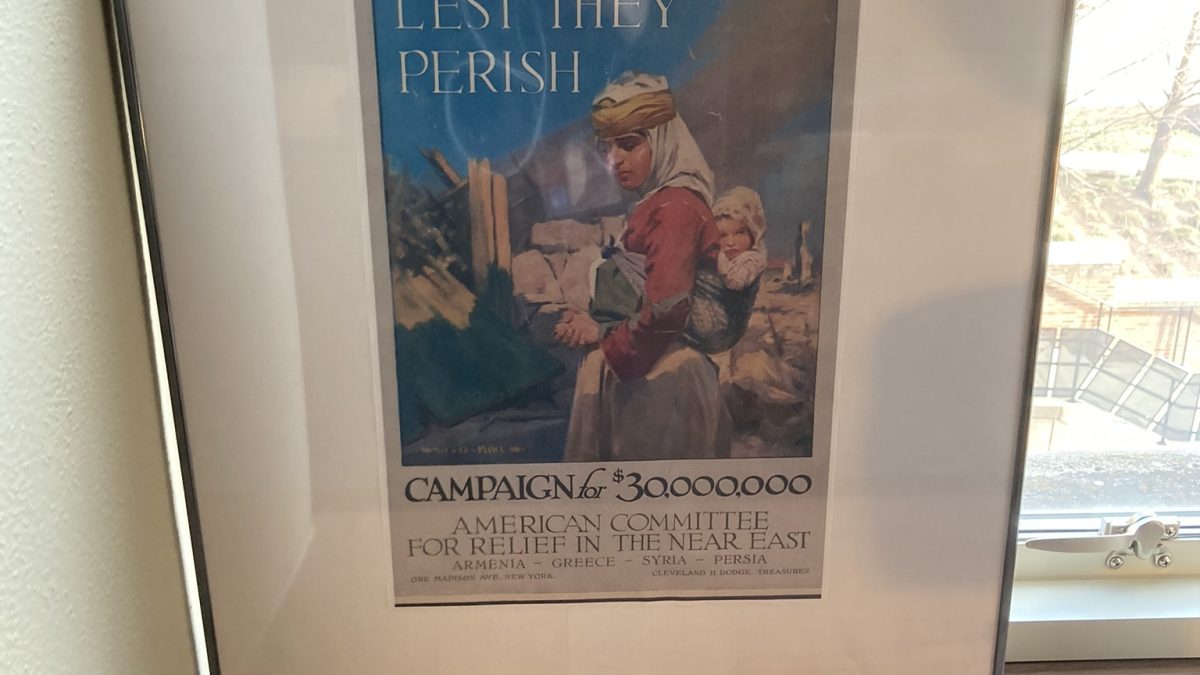
A poster of the Near East Relief and its 30 million dollar aid campaign.
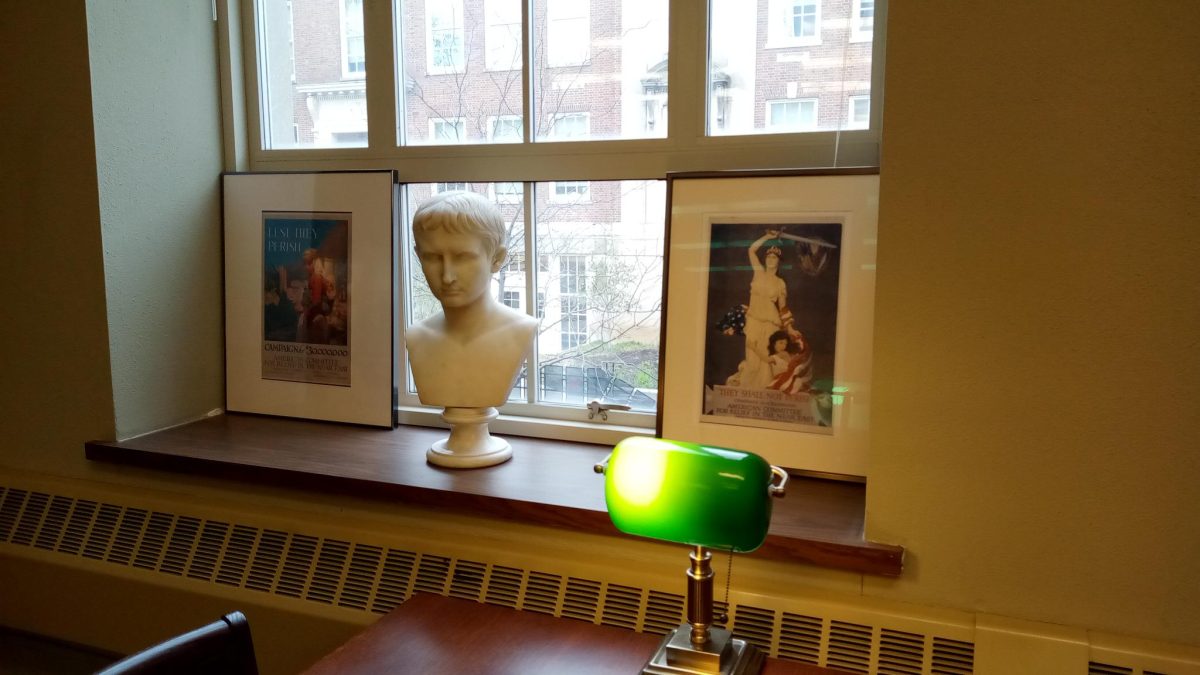
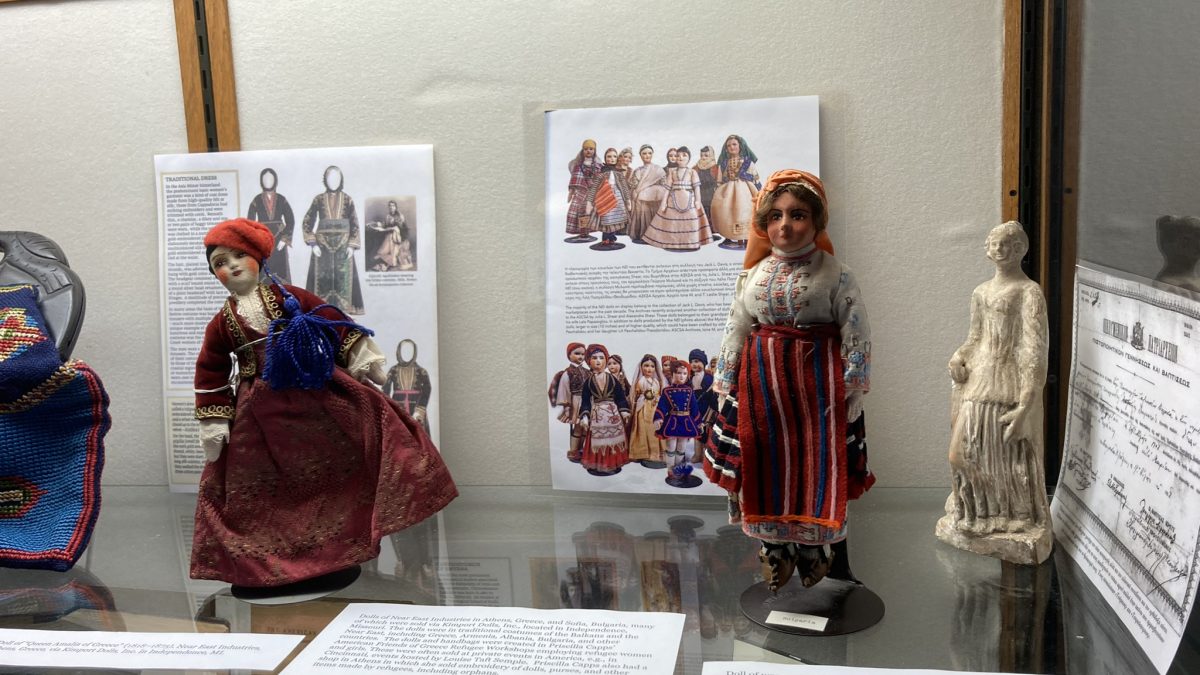
Dolls and purses made by orphans and refugees in workshops run by Priscilla Capps, daughter of Princeton classics professor Edward Capps and director of the American School of Classical Studies at Athens. Priscilla was director of Near East Industries in Athens, which manufactured the dolls and purses, imported to the U.S. by Kimport Dolls Inc. in Independence, Missouri. From the private collection of UC Professor Jack Davis.
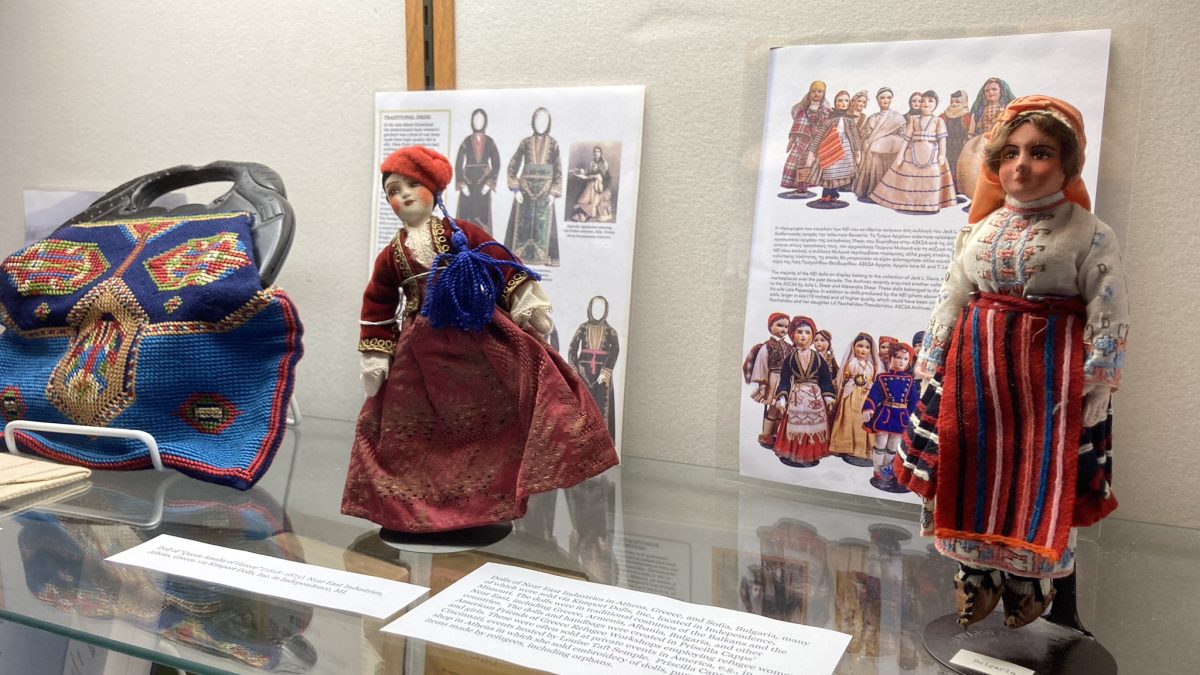
The dolls sold wore traditional costumes and some were characterized as brides, priests, etc., and the one to the left was called ‘Queen Amalia,’ referring to the actual Queen of Greece from 1836 to 1862
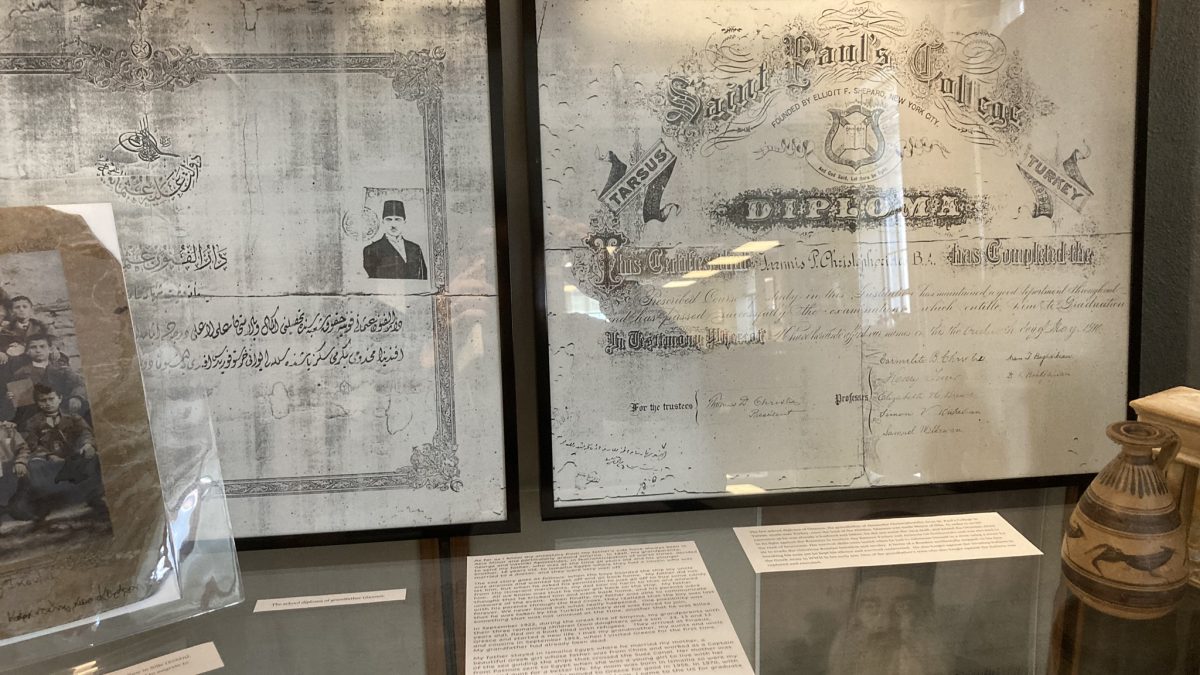
Professor Alexander Christophoridis’ grandfather’s diploma from middle school and law school in Tarsus (the American Saint Paul’s College).
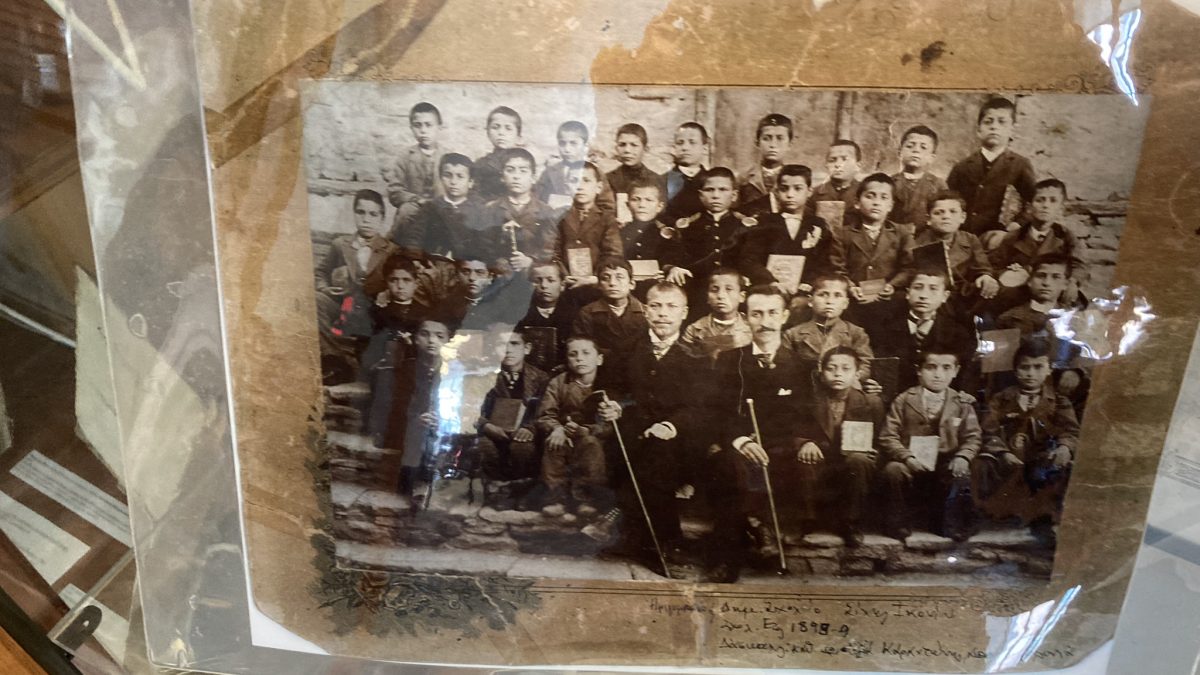
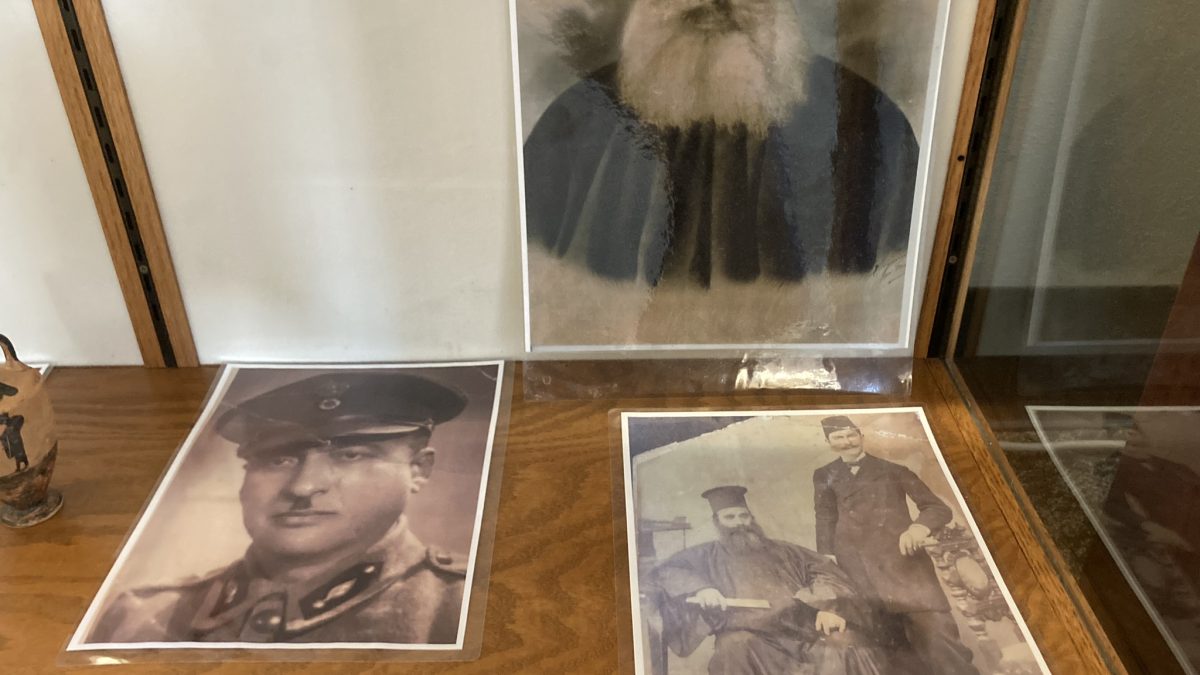
Alexander Christophoridis’ grandfather who was forced to join the Turkish Army to fight the Russians in the early 1920s and who joined the Greek army at age 52 to fight the Italians, and the great grandfather, Bishop of Sille, Cappadocia, who was captured by the Turks during the Greco-Turkish War and never heard from again.
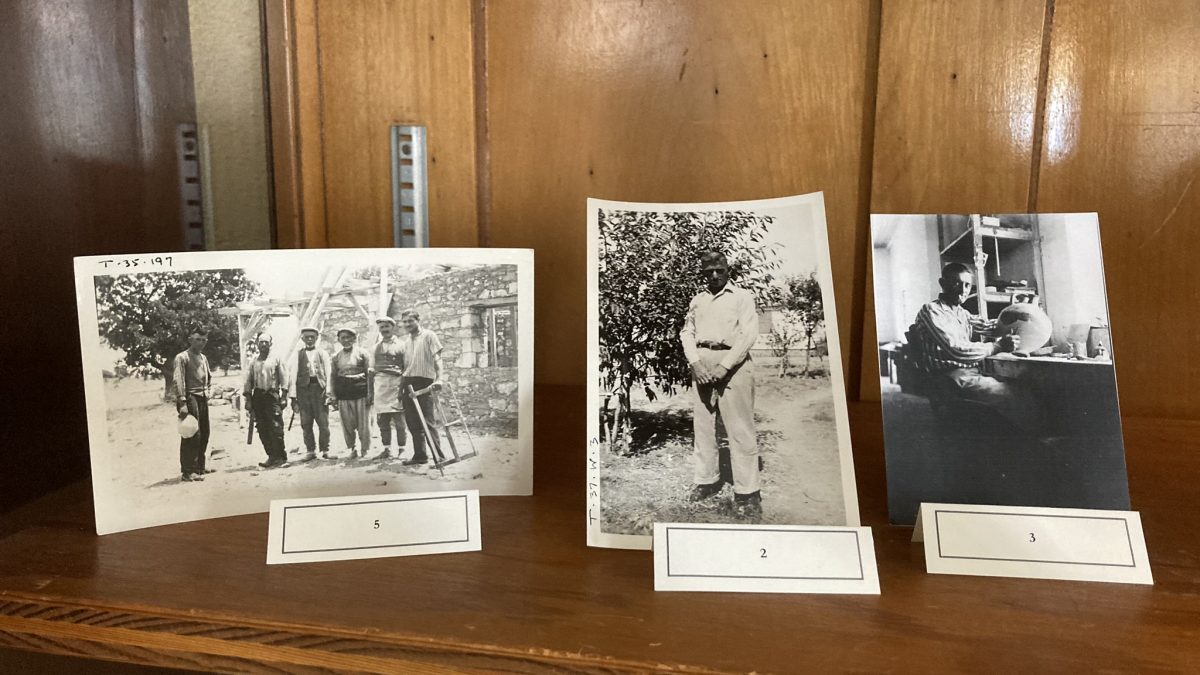
Photographs of the workers on the Troy excavation, all refugees, including the foreman, an Albanian Muslim. From the Archives of the Classics Department and its curator, Jeffrey Kramer.
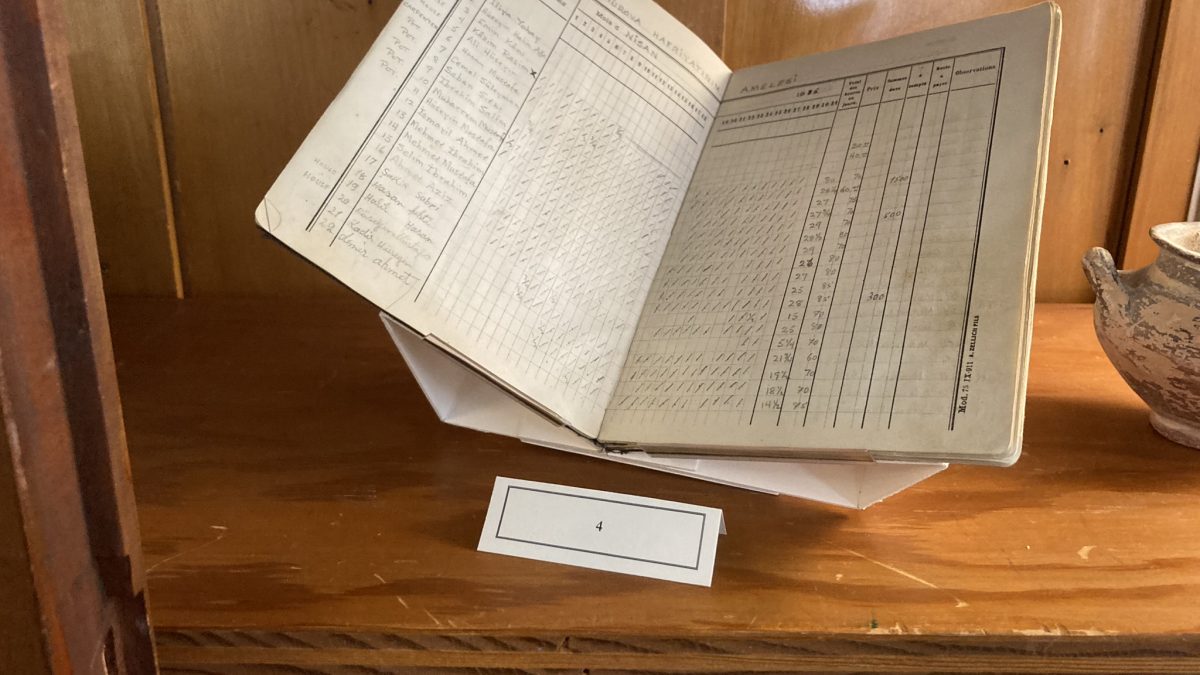
Notebook from the Troy excavation listing the salaries of the workers. From the Archives of the UC Classics Department, curated by Jeffrey Kramer.
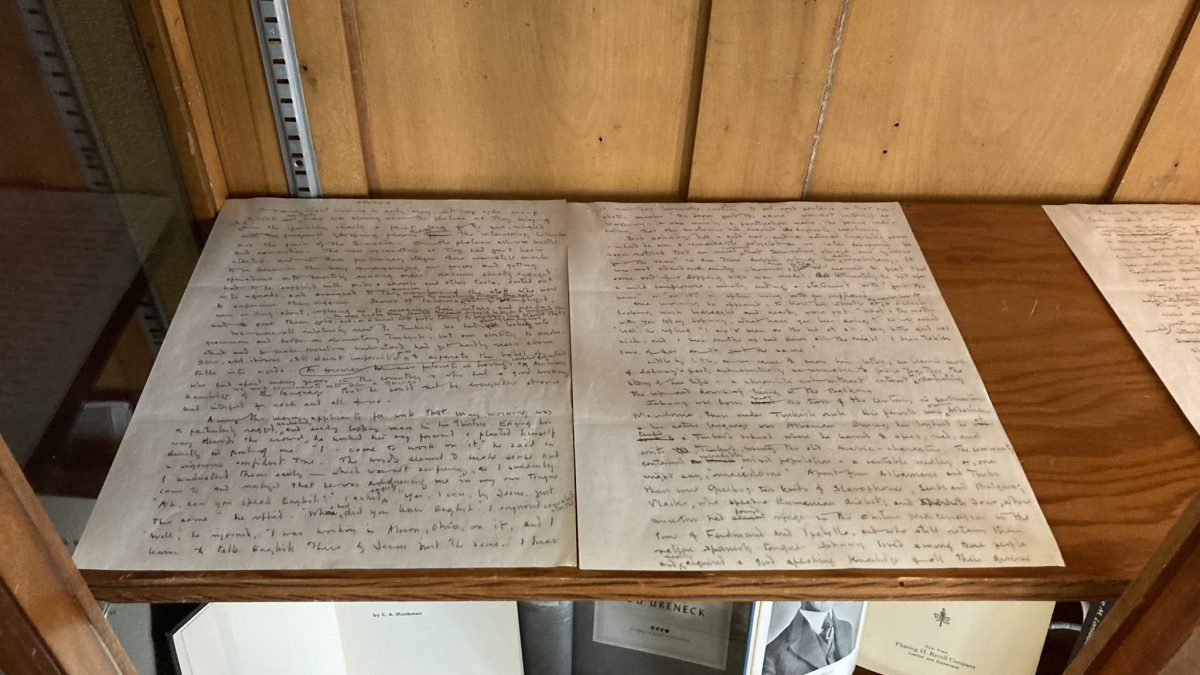
Letter of archaeologist and UC Professor Carl Blegen describing the workers on the Troy excavation who were Muslim refugees (see Jeffrey Kramer’s account above). From the Archives of the UC Classics Department.
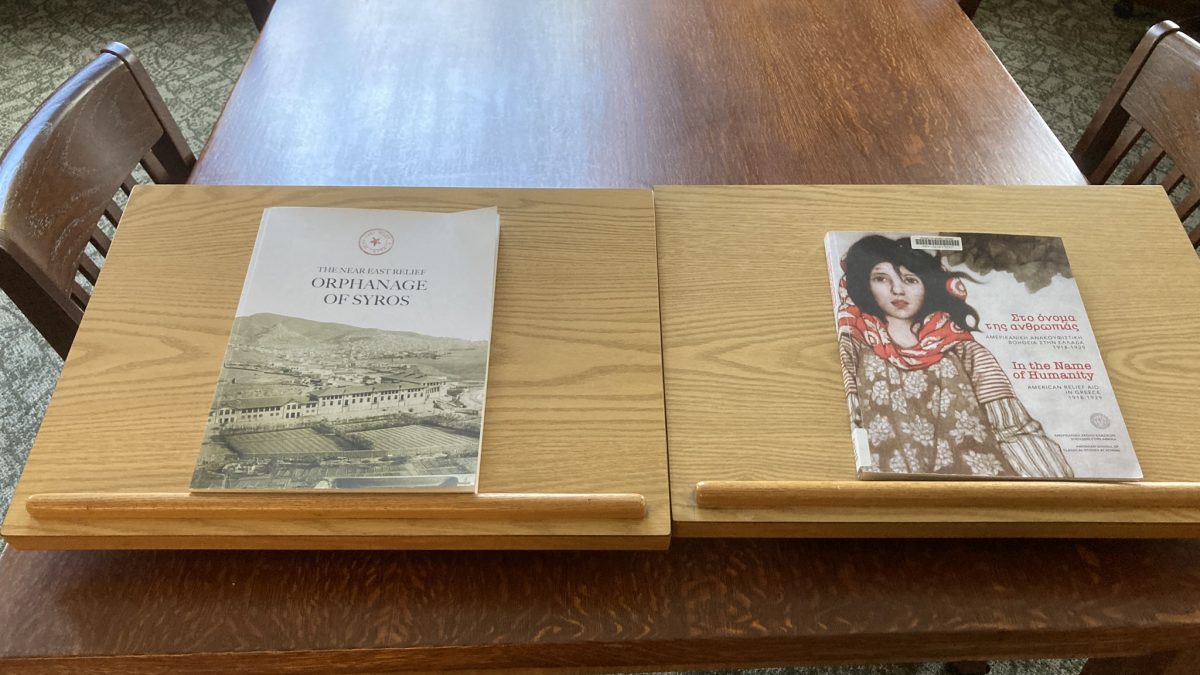
Exhibition catalogs of the Near East Relief run orphanage of Syros, and the inspiration for our exhibition, “In the Name of Humanity” (Στο όνομα της ανθρωπιάς), an exhibition at the Makriyiannis Wing of the ASCSA, cosponsored by the Archives of the ASCSA and the Gennadius Library.
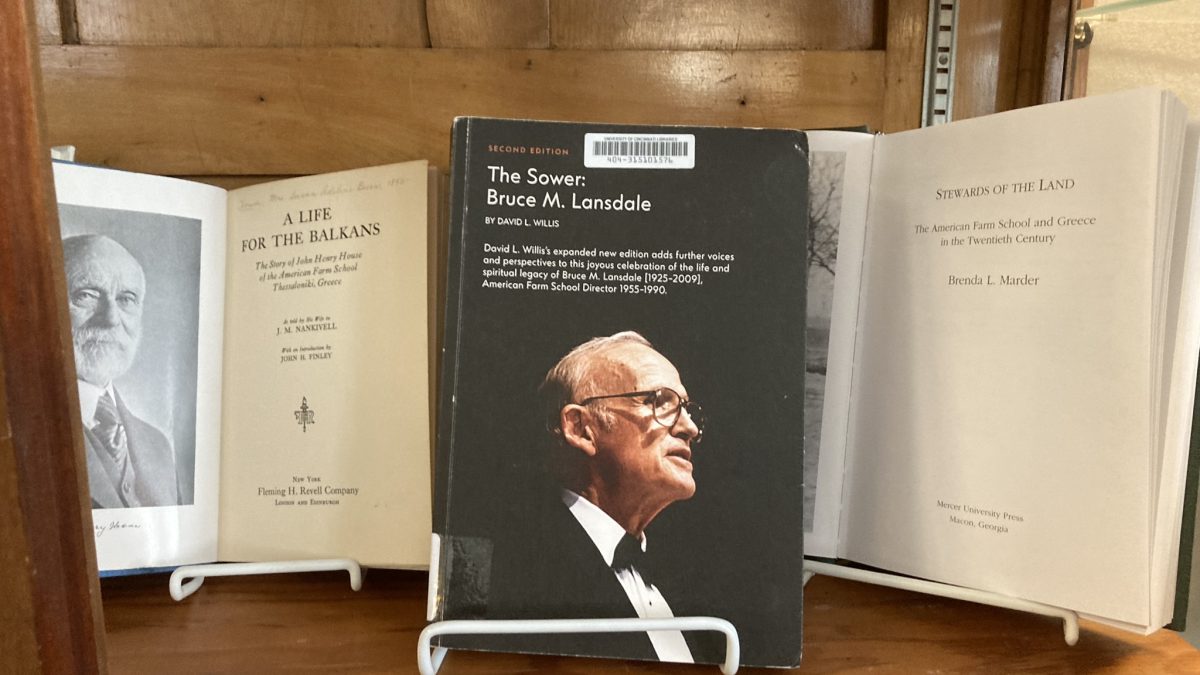
The American Farm School. The Burnam Library has a large collection of materials by Herbert Lansdale, former Director of the YMCA in Thessaloniki, and his son Bruce, former President of the American Farm School in Thessaloniki.
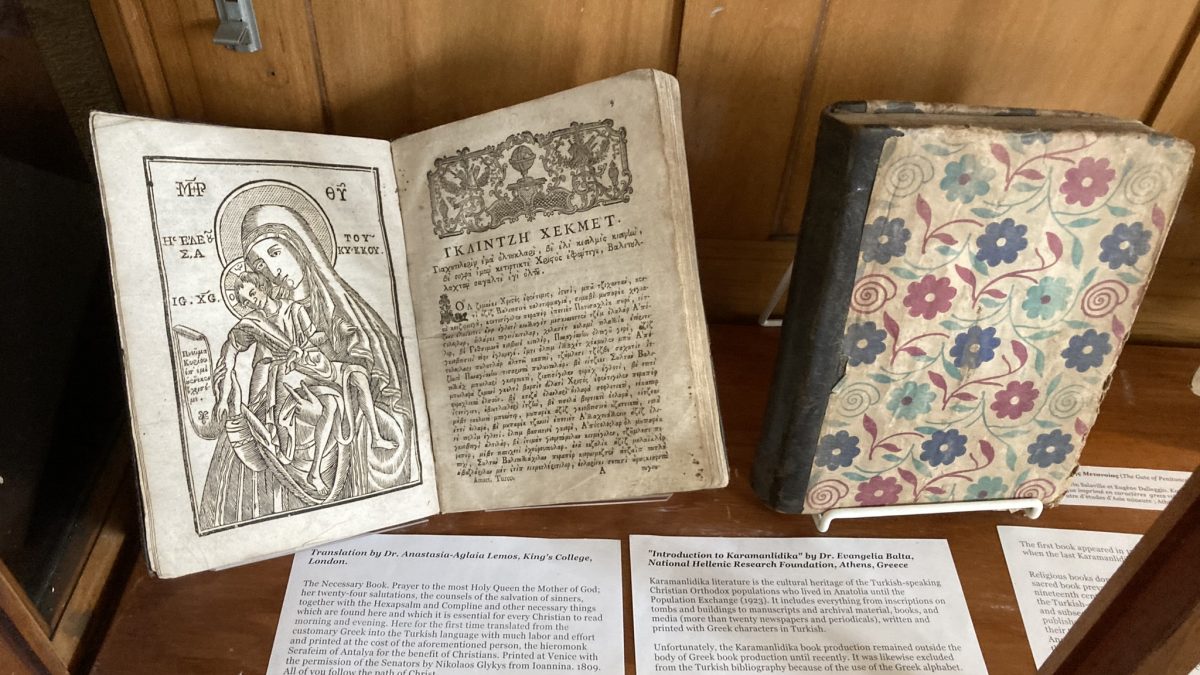
Karamanlidika, books written in the Turkish language using the Greek alphabet, printed between 1718 and 1935. From the Burnam Library’s rare book collection.
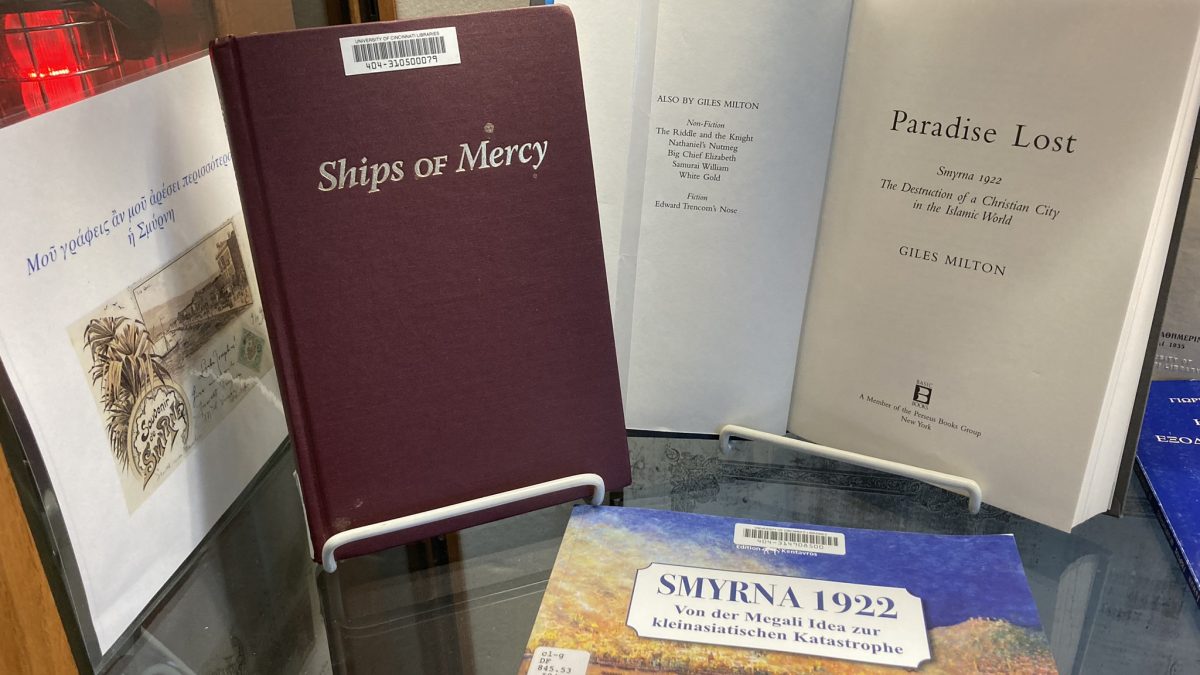
Books about the Smyrna Catastrophe, such as the other Paradise Lost by another John Milton, and the important book Ships of Mercy by Christos Papoutsy.
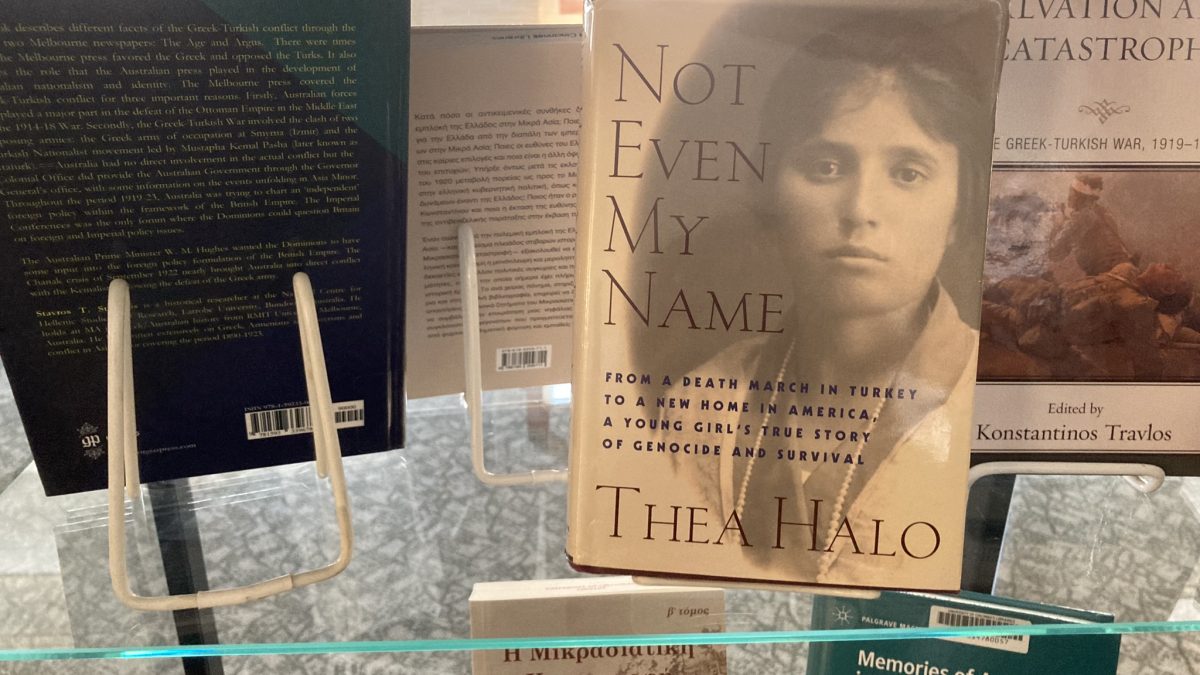
Countless books detail the Greco-Turkish War and the Population Exchange.
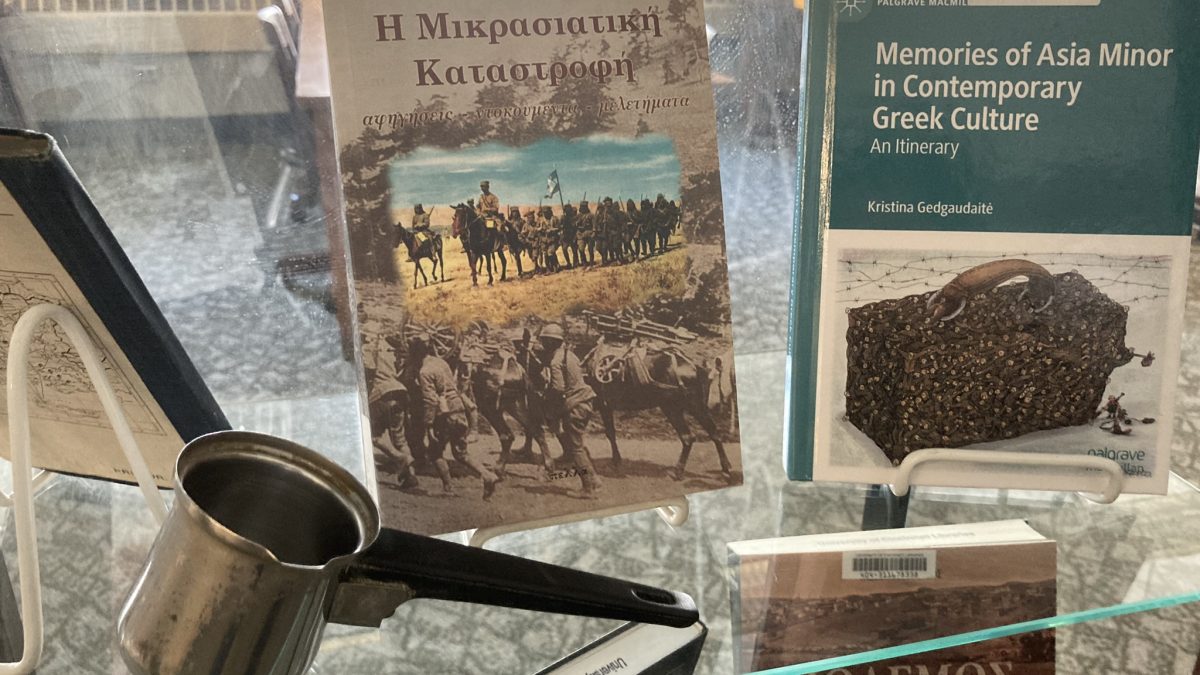
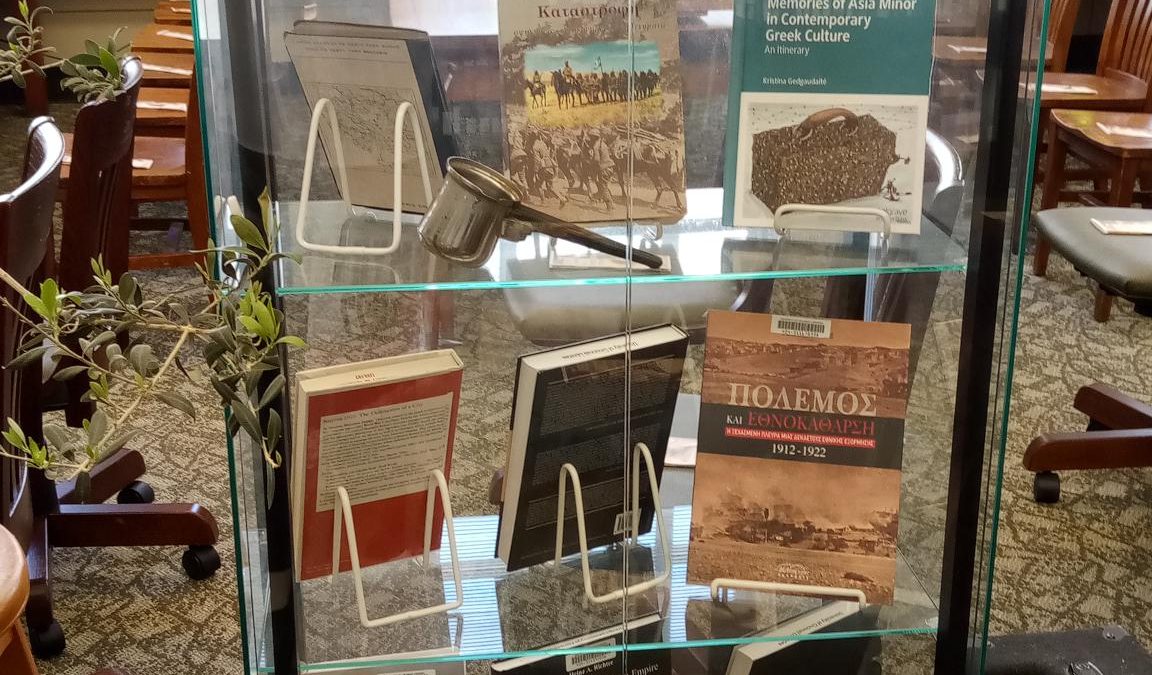
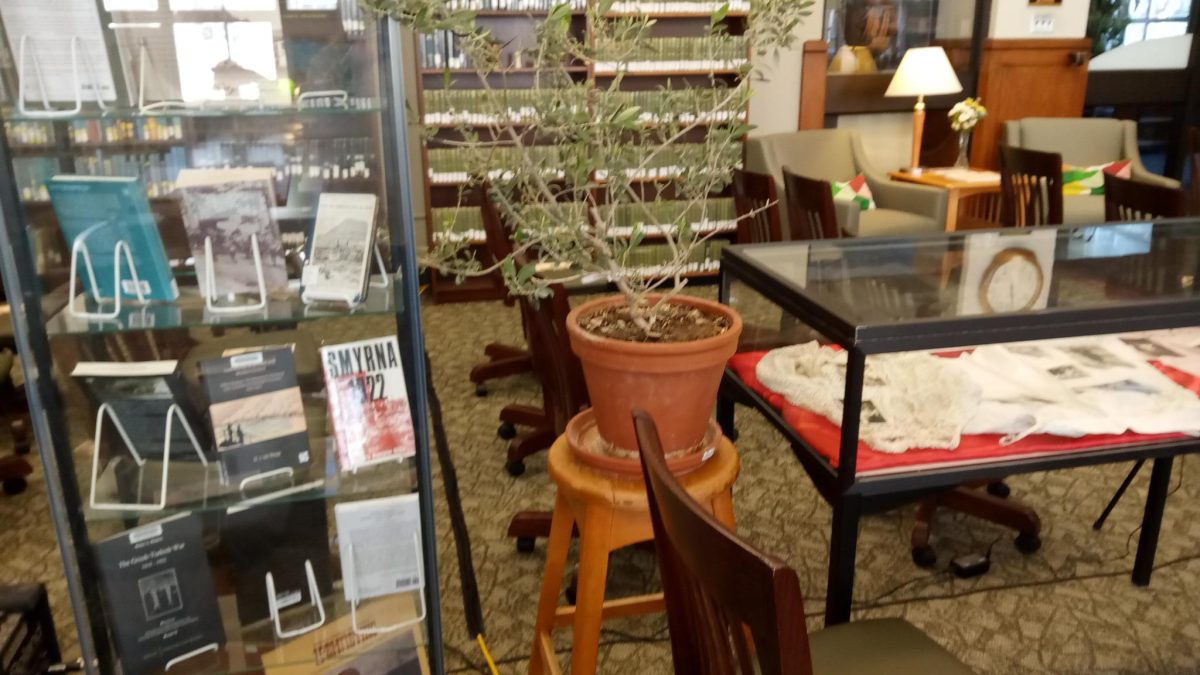
Included in the exhibition is a Greek olive tree. From the private collection of Senior Research Associate John Wallrodt, UC Classics Department.
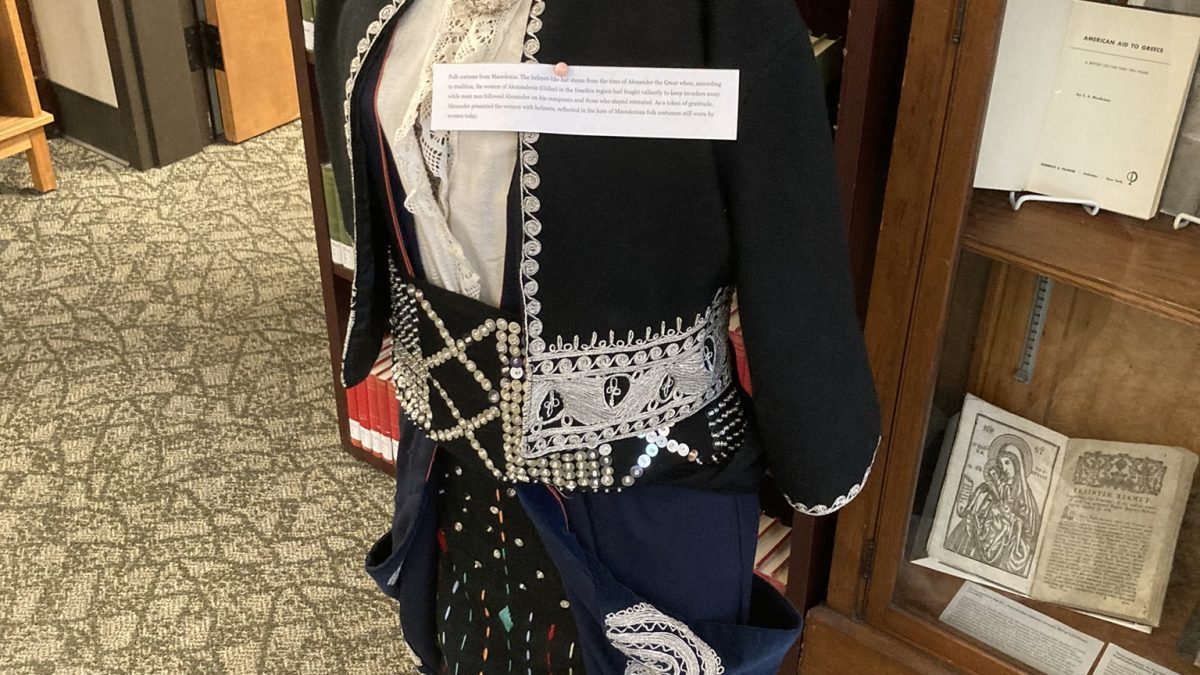
Folk costume from Macedonia and its helmet-like cap. From the collection of the Greek Orthodox Church in Cincinnati.
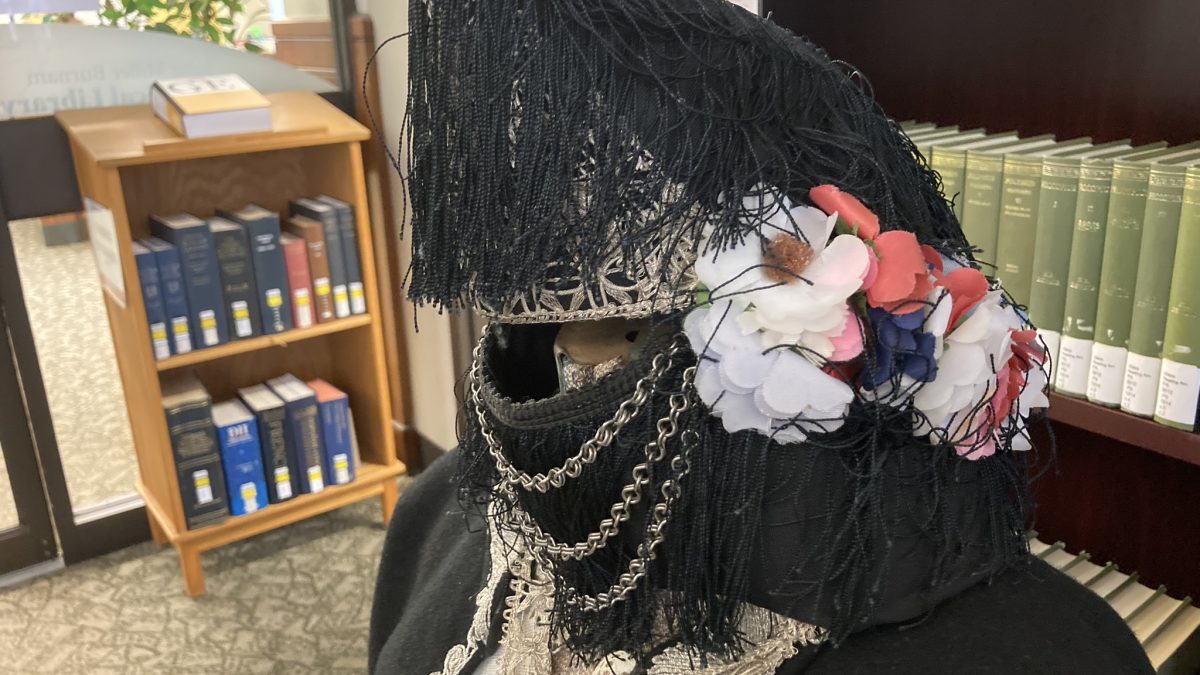
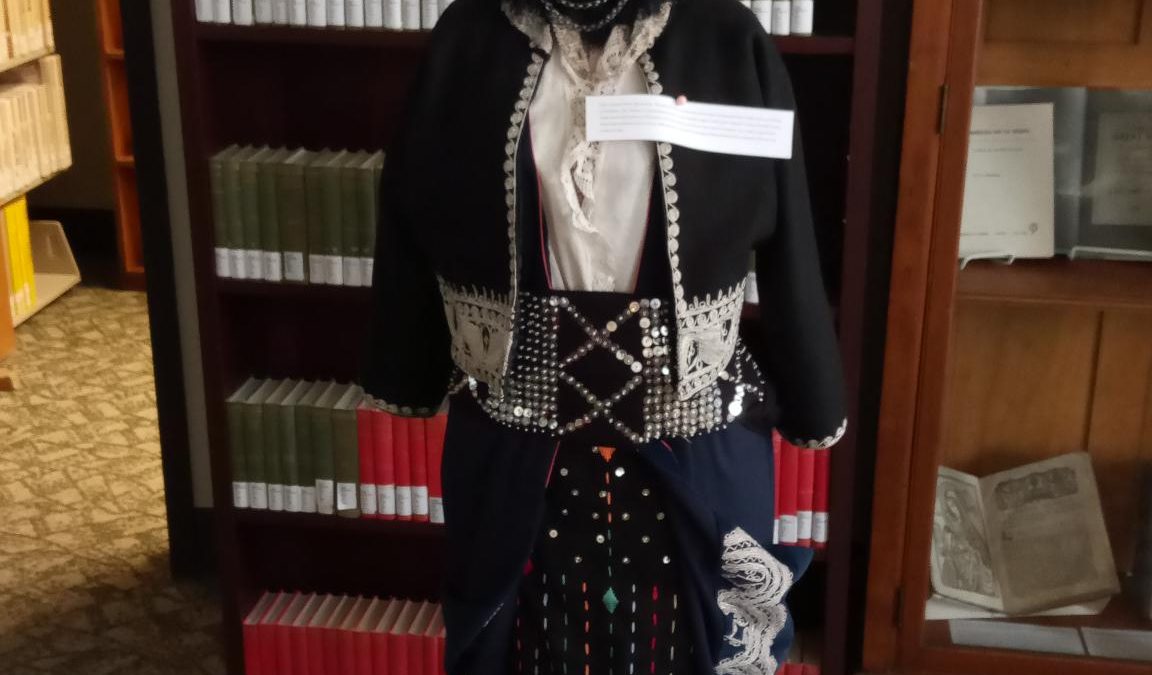
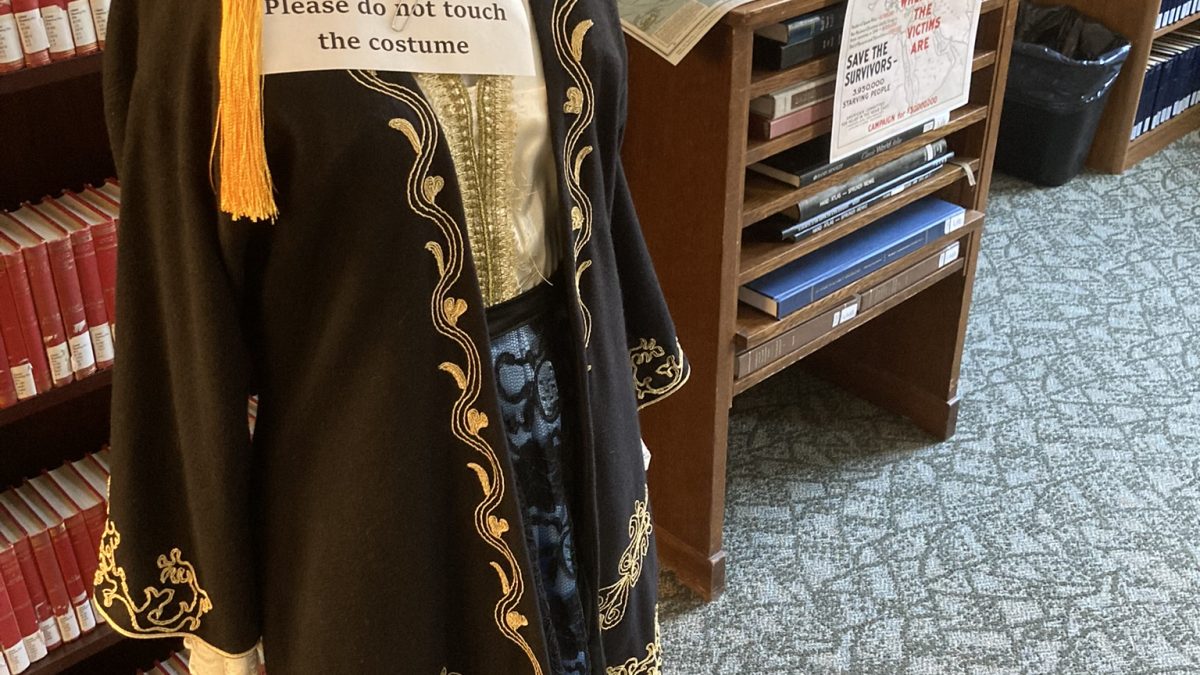
Folk costume from Amalia, Attica. From the collection of the Greek Orthodox Church in Cincinnati.
